ICG MAGAZINE


PLUTOFRESNEL: 80 W equivalent to 300 W Tungsten

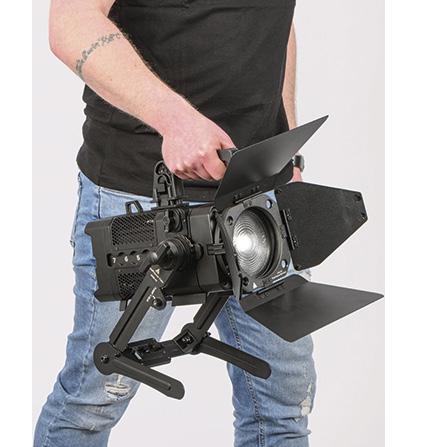
BUILT-IN BATTERY: 3h on MAX Brightness
LEOFRESNEL: 250 W equivalent to 1000 W Tungsten
BUILT-IN BATTERY: 2h on MAX Brightness



PLUTOFRESNEL: 80 W equivalent to 300 W Tungsten


BUILT-IN BATTERY: 3h on MAX Brightness
LEOFRESNEL: 250 W equivalent to 1000 W Tungsten
BUILT-IN BATTERY: 2h on MAX Brightness
Astera’s new Fresnels offer a 15° to 60° beam angle and superior colors, thanks to its Titan LED Engine. Both models contain a battery and feature numours mounting options, making them the most portable Fresnel option for film, studio and event lighting.

Backside display with TouchSlider
www.astera-led.com/plutofresnel www.astera-led.com/leofresnel
Projection lens with Zoom coming end of 2023

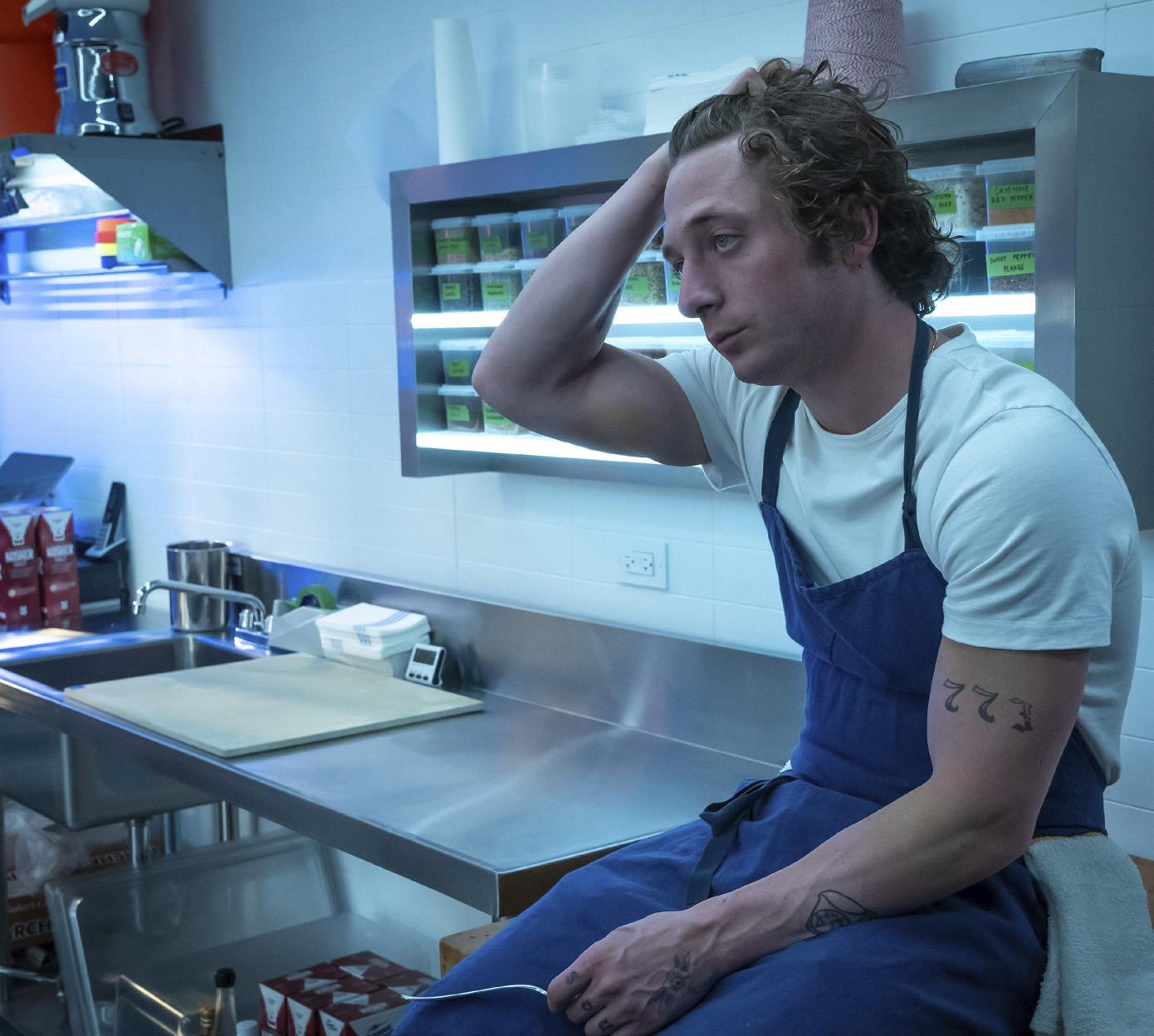


Television Academy

Saban Media Center Wolf Theatre • Los Angeles, CA
WWW.ECAWARDS.NET


SILVER SPONSORS
PREMIER SPONSOR

BRONZE SPONSORS

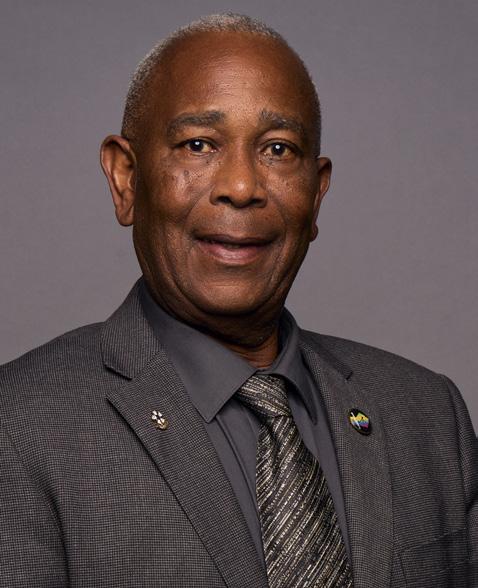
This issue of ICG Magazine highlights some of the many locations our membership visits for work. Although the current WGA/SAG strikes have frozen much of this industry’s union workforce in place, there will be a time (hopefully very soon) when IATSE production crews will hit the road again, bringing their world-class skills to locations near and far. Traveling for a job is something I know a little about, as being a camera technician has taken me all around this country and halfway around the world. And as most of this membership knows, it’s not the jet-set life those outside our industry might imagine.
Shooting on location can often mean some unplanned “adventures” – like a film I worked on near Acapulco, Mexico, where the smoke pots we used set a field on fire. After getting our camera equipment back to the truck, we (foolishly) rushed back to help put out the fire – until a military water truck came and finished the job.
There was also a time shooting on a river near Cuernavaca (also in Mexico). The script called for blowing up a bridge, which had to be built. That bridge became so popular with the locals, we had to post security guards to stop people from using it (until we could really blow it up)! For a show with Allen Daviau, ASC, shot in the Costa Rican jungle, I passed out and had to be air-lifted out by helicopter. Turns out I had been climbing up and down a volcano with a camera backpack that had the sternum straps so tight they closed off my airway. (My fault for grabbing the wrong backpack).
The teaching moment from that experience (and others for which safety was a factor) is that if I had not been working with a top-notch creative team (Director Frank Marshall and Producer Kathleen Kennedy) and a very experienced safety team on set, who knew exactly what they were doing, the outcome may have been very different.
That’s not to say international crews don’t have great technicians like our IATSE brothers and sisters. After all, filmmaking
is a universal language; and usually, the biggest obstacles on location are weather (my examples include a 120-degree shoot in Death Valley, CA; the worst snowstorm in half a century near Montreal, Canada; getting out of Hong Kong before a typhoon hit and shooting right after a hurricane on Kaui) and language. For example, crossing the border from Thailand into Cambodia to shoot in a refugee camp was an incredible experience. Looking back, communicating with the local Thai crews (who were great camera technicians) was the only real challenge.
A similar experience occurred when shooting Kodō drummers on Japan’s Sado Island. It was the first overnight flight I’d been on and, restless, I began wandering the aisles, where I struck up a conversation with a young Black brother (also from the U.S.). When the plane landed, I was met by my Japanese translator, who knew the young man I had befriended on the plane! Talk about a small world. As for the shoot, we waited on the island for four days to get a spectacular sunset (which finally came on the last day).
It is true that many international locations don’t have as deep an infrastructure for filmmaking as here in the U.S. Transportation and moving gear in and out of a remote location can be very challenging, especially if the (union) support and experience are lacking. And, let’s be honest, traveling to distant locations (especially when trying to raise a young family) is a chore.
But it’s not without some cool benefits.
Just ask my son, Baird Steptoe Jr., who, while in middle school, traveled from California to visit me on the Montreal set of The Sum of All Fears (shot by past ICG President John Lindley, ASC). I thought he was excited to see me at work. But it turned out his biggest thrill was being able to get a pair of the hottest new Nike sneakers – months before his friends could buy them in L.A.!
Here’s to hoping all our union brothers and sisters can be back out on location very soon, bringing our talents and expertise to parts unknown.

Masterpiece’s Entertainment Division understands the complex logistics of the industry including seemingly impossible deadlines, unconventional expedited routings, and show personnel that must be on hand. Masterpiece has the depth of resources to assist you in making sure everything comes together in time, every time.
Contact us to find out how our experienced team can securely and efficiently handle transporting to remote locations, made possible through our network of agents and partners around the globe. We have high-level access to restricted areas in all major international airports to oversee freight handling to make sure your precious cargo is always safe.
Our range of services, include:


• Performing Arts Industry Expertise
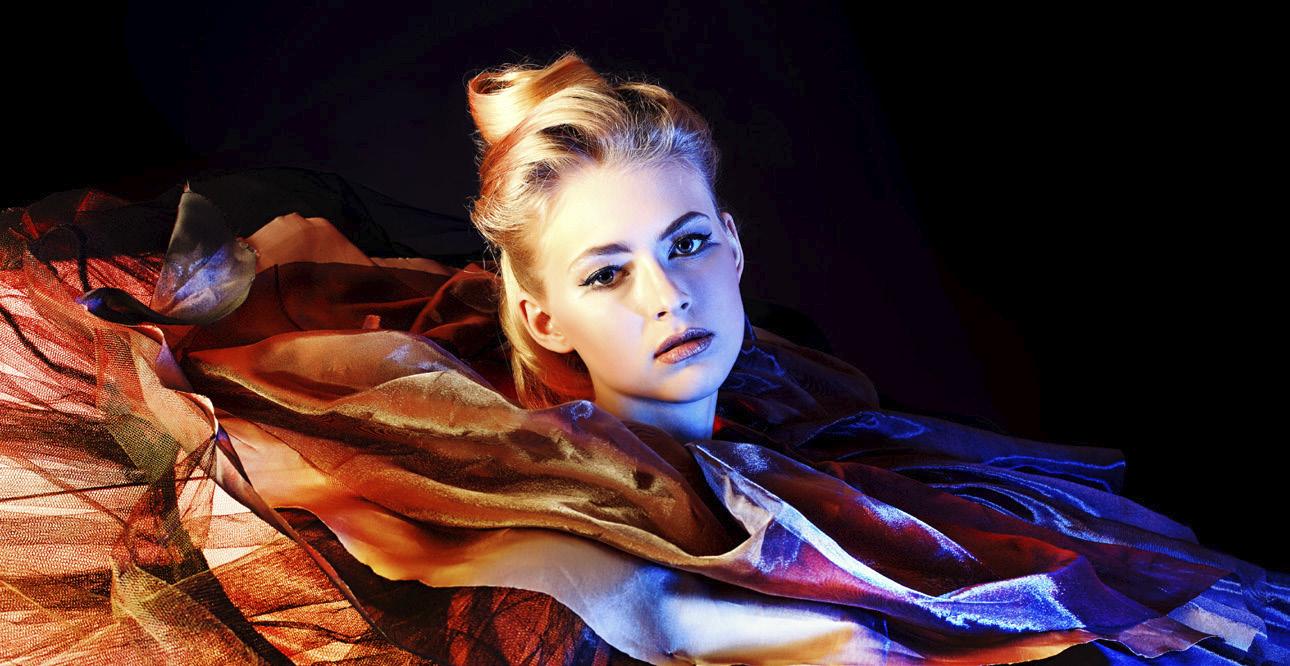


• Customs Brokers
• Freight Forwarders
• ATA Carnet Prep & Delivery
• Border Crossings
• Domestic Truck Transport
• International Transport via Air or Ocean
• Expedited Shipping Services
• 24/7 Service Available
Publisher
Teresa Muñoz
Executive Editor
David Geffner
Art Director
Wes Driver
STAFF WRITER
Pauline Rogers
COMMUNICATIONS COORDINATOR
Tyler Bourdeau
COPY EDITORS
Peter Bonilla
Maureen Kingsley CONTRIBUTORS
September 2023
vol. 94 no. 08
IATSE Local 600
NATIONAL PRESIDENT
Baird B Steptoe
VICE PRESIDENT
Chris Silano
1ST NATIONAL VICE PRESIDENT
Deborah Lipman
2ND NATIONAL VICE PRESIDENT
Mark H. Weingartner
NATIONAL SECRETARY-TREASURER
Stephen Wong
NATIONAL ASSISTANT SECRETARY-TREASURER
Jamie Silverstein
NATIONAL SERGEANT-AT-ARMS
Betsy Peoples
NATIONAL EXECUTIVE DIRECTOR
Alex Tonisson
COMMUNICATIONS COMMITTEE
John Lindley, ASC, Co-Chair Chris Silano, Co-Chair
CIRCULATION OFFICE
7755 Sunset Boulevard Hollywood, CA 90046
Tel: (323) 876-0160
Fax: (323) 878-1180
Email: circulation@icgmagazine.com
ADVERTISING REPRESENTATIVES
WEST COAST & CANADA
Rombeau, Inc.
Sharon Rombeau
Tel: (818) 762 – 6020
Fax: (818) 760 – 0860
Email: sharonrombeau@gmail.com
EAST COAST, EUROPE, & ASIA
Alan Braden, Inc.
Alan Braden
Tel: (818) 850-9398
Email: alanbradenmedia@gmail.com
Instagram/Twitter/Facebook: @theicgmag
ADVERTISING POLICY: Readers should not assume that any products or services advertised in International Cinematographers Guild Magazine are endorsed by the International Cinematographers Guild. Although the Editorial staff adheres to standard industry practices in requiring advertisers to be “truthful and forthright,” there has been no extensive screening process by either International Cinematographers Guild Magazine or the International Cinematographers Guild.
EDITORIAL POLICY: The International Cinematographers Guild neither implicitly nor explicitly endorses opinions or political statements expressed in International Cinematographers Guild Magazine. ICG Magazine considers unsolicited material via email only, provided all submissions are within current Contributor Guideline standards. All published material is subject to editing for length, style and content, with inclusion at the discretion of the Executive Editor and Art Director. Local 600, International Cinematographers Guild, retains all ancillary and expressed rights of content and photos published in ICG Magazine and icgmagazine.com, subject to any negotiated prior arrangement. ICG Magazine regrets that it cannot publish letters to the editor.
ICG (ISSN 1527-6007)
Ten issues published annually by The International Cinematographers Guild 7755 Sunset Boulevard, Hollywood, CA, 90046, U.S.A. Periodical postage paid at Los Angeles, California.
POSTMASTER: Send address changes to ICG 7755 Sunset Boulevard Hollywood, California 90046
Copyright 2021, by Local 600, International Alliance of Theatrical Stage Employes, Moving Picture Technicians, Artists and Allied Crafts of the United States and Canada. Entered as Periodical matter, September 30, 1930, at the Post Office at Los Angeles, California, under the act of March 3, 1879. Subscriptions: $88.00 of each International Cinematographers Guild member’s annual dues is allocated for an annual subscription to International Cinematographers Guild Magazine. Non-members may purchase an annual subscription for $48.00 (U.S.), $82.00 (Foreign and Canada) surface mail and $117.00 air mail per year. Single Copy: $4.95
The International Cinematographers Guild Magazine has been published monthly since 1929. International Cinematographers Guild Magazine is a registered trademark. www.icgmagazine.com www.icg600.com
Margot Lester Lara Solanki
This month’s issue is themed around Locations , and ICG readers would be hard-pressed to find a better place to make a hit TV show than Chicago.
The fact that FX/Hulu’s The Bear received 13 Emmy nominations in its first season is due mainly to the terrific creative team behind the lens of the food-themed series that’s captured America’s heart (and taste buds). But let’s not diminish the role the city of Chicago plays – in front of and behind the lens.
Pretty much everyone ICG Staff Writer Pauline Rogers interviewed for our cover story (page 18) said how proud they were to see their city presented in such a bright light. That starts with Director of Photography Andrew “Drew” Wehde, whom we first covered for the 2018 Sundance indie Eighth Grade [ICG Magazine Next-Level Filmmaking] and who now sits atop the episodic mountain with a show all about his hometown. Season 2 sees The Bear’s perpetually challenged chef, Carmen “Carmy” Berzatto (a terrific Jeremey Allen White), and his ever-feisty kitchen staff struggling to open a new finedining eatery. As Wehde told Rogers: “We wanted to make sure viewers understand how important Chicago is to everyone – not just to the characters but to the filmmakers who live here and make this series.”
Considering how quickly The Bear was produced – 10 episodes in 45 days – that goal was hardly a given. As A-Camera 1st AC Matt Rozek described about escaping the heat of the kitchen, “We had spent the better part of a day shooting Ayo [Edebiri, as Sydney Adamu] on the train for her episode where she traverses the city and hits a lot of restaurants. We had finished with the scripted work and were headed back to the station where we could unload, so we just wheeled the dolly with the Ronin up to the front of the train and started shooting out of the front – crazy upangles, slow pans as we came around corners in the Loop, Dutch angles as other trains passed on opposing tracks. When people saw the dailies the next day, they loved it. By the time we wrapped, we had shot the city
from every angle, from every mode of transport –train, boat, helicopter, city driving, freeway driving, everything.”
Finding the unseen was also the blueprint for Season 2 of Netflix’s The Lincoln Lawyer In an interview done before the WGA strike, showrunner Ted Humphrey described Los Angeles as “atmospheric,” but with a lot more to it than just Hollywood and celebrities. “It’s bright and sunny, but that just serves to accentuate the darkness lurking around every corner,” he says in the story (page 32), also written by Rogers. And while Season 1 stuck to mostly familiar Westside locations, viewers in Season 2 are treated to more off-the-grid L.A., everything from Frogtown to Valencia, Baldwin Hills to Chatsworth, and points in between.
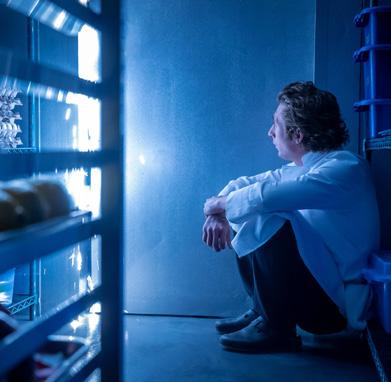
What’s also cool about Season 2 is that both directors of photography have the same Latino/ Mexican ancestry that formed Los Angeles (or its original nomenclature, El Pueblo de Nuestra Señora la Reina de los Ángeles). Abraham Martinez is a 25-year L.A. resident, known for projects like 61st Street , Queen of the South , and The Chi ; Pedro Gómez Millán, AMC, was born and raised in Mexico City and has credits that include Search Party , Little America , and Gentefied . As Millán explained the approach for Season 2, “We wanted to explore the east side and the gentrification in those neighborhoods. That meant delving more into an earth-color palette and finding the right spots to place the camera to feature those great locations.”
Exploring our annual Emerging Cinematographer Awards (ECA) section (page 48) is another treat, as it marks the first time the ECA’s have been awarded post-pandemic. (Last year’s in-person ECA’s went to the 2020 honorees delayed by COVID.) This year also serves as the 25th anniversary of an event co-founded by Guild member Rob Kositchek and ICG President Emeritus George Spiro Dibie, ASC. Currently cochaired by longtime ICG Director of Photography Jimmy Matlosz and former ICG President Steven Poster, ASC, all the proceeds and sponsorships of the ECAs go into ICG’s scholarship fund.

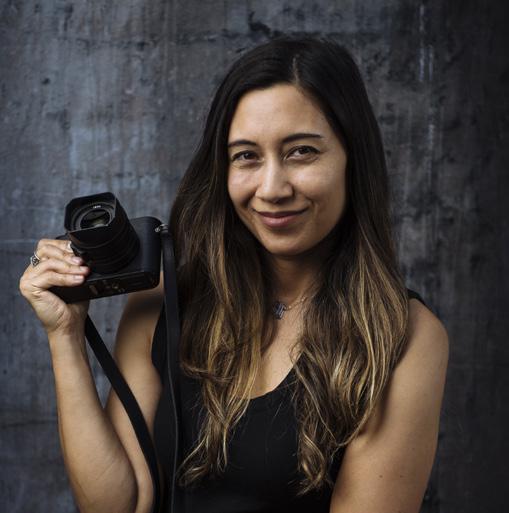
What’s unique about this 2023 class is that they all voiced how the events of these past years have changed them – as filmmakers and people. Some shot their movies in the darkest days of the pandemic, others wanted to be part of stories that tackled issues of race, gender identity, and crime that have been dominating the headlines. To a one, they view their ECA peer recognition as a validation of their career choices and of the union that supports them.
David Geffner Executive Editor
Executive Editor
Email: david@icgmagazine.com
2023 ECA Honorees
“It’s hard to believe I’ve been profiling ECA winners for more than a decade!. And you know what? I’m as impressed by the creativity and talent of this 2023 class, as was with that very first group years ago!”
Angels Flight, Stop Motion
“I absolutely love working on set as a unit photographer, capturing key details and moments. But the position comes with its own unique set of challenges, so I want to use this space to give a shout-out to all the Local 600 camera members – from DP’s to operators, from 1st and 2nd AC’s to DIT’s, loaders, and utilities – who have provided support to me throughout the years. From creating space on the camera truck for my gear and making space next to camera, to checking in with me to make sure I’m getting what I needed, that support has made all the difference to me and my job. You know who you are and know that you are all so appreciated!”
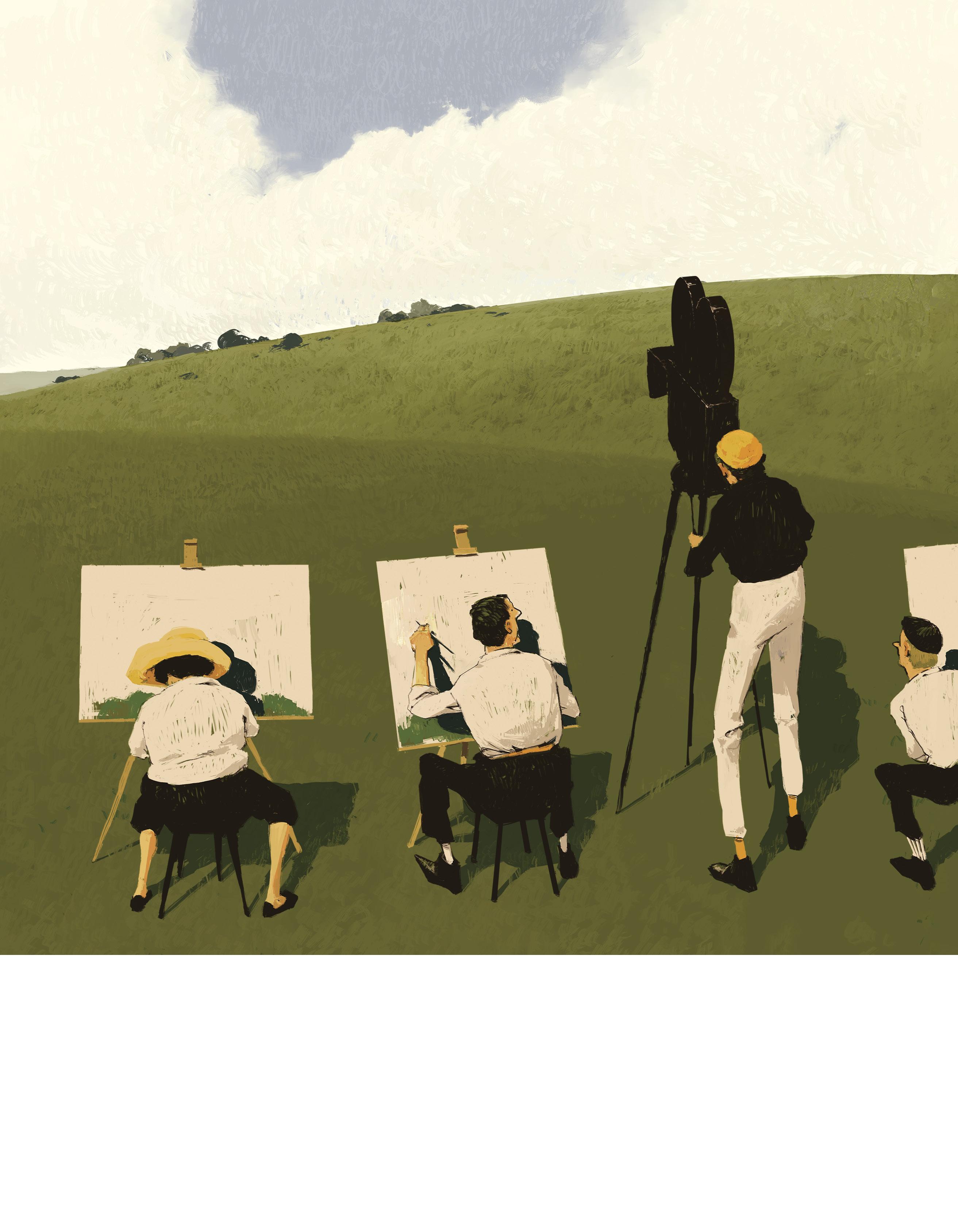



It isn’t often a Hollywood icon writes an honest biography (without pushing the sympathy button) that is painful (without daring you to feel for him/her), practical (a sharp-eyed take on the art and business of Hollywood) and also inspiring. I only wish I’d been able to read Duke’s book before my first encounter with him as a director. It may sound ridiculous, but as a white Jewish woman, I (like many others), coming into the entertainment industry in the 1980s, could relate well to what Duke endured, only from a woman’s place.
One of the tricks to drawing a reader into a book is the dedication, and Duke had me with his first quote. “To not the wisdom seekers but those who, in spite of losses, defeats, accomplishments, and victories, constantly ask the question ‘Why?’” That’s a question I still ask myself dozens of times a day, so by page one, Bill Duke: My 40-Year Career on Screen and Behind the Camera had me hooked.
Duke’s prologue is a powerful statement about Hollywood when he started, and, sadly, where we are again. It’s also an empowering lesson we all should learn.
As he writes: “In December 1982, with several
episodes of Flamingo Road, Falcon Crest and other television shows under my belt, I made my way to CBS Studios to direct my first episode of the primetime soap opera of that time, Dallas. Although Falcon Crest was a top-ten hit, Dallas was the holy grail of television. An opportunity to direct an episode of the number-one prime-time show – in its third year at the top of the ratings – was confirmation that I had proven my skills. At 8:00 a.m. I drove to the studio lot for my first day of work. When I arrived at the gate, the large white security guard asked, ‘Who are you delivering for?’ ‘I’m sorry,’ I replied. ‘Who are you delivering for?’ he repeated.
“I looked at the guard for what felt like an eternity. My mind flashed back to some of the many insults I had endured in my youth. I had been called nigger, coon, blackie, darkie, and tar baby, among other things; and in that moment, it felt like little had changed.”
In the book, Duke candidly expressed what he wanted to say, but in the story, he sits in silence, staring at the man’s smug face. Duke recalls what he had learned from Dr. Martin Luther King Jr. and the sacrifices made. Without that, Duke believes his “career would never have been possible.” After a

few moments, he takes a breath. “There is obviously a misunderstanding,” he continued. “I am the first black director on Dallas, the number-one hit show on television, and what I’m delivering is my expertise and talent to that show.”
Born in Poughkeepsie, New York, on February 20, 1943, Duke’s early childhood was cloistered and almost idyllic – for the world he inhabited. There was dancing, baths in an old tin tub, and warm blankets. He grew up among hard-working foundry workers, and despite the harsh conditions, there was always laughter. However, a different reality crept in, as Duke began to experience what it was like to be a Black child in the 1950s.
He recounts a third-grade teacher, during history week, trying to be inclusive with the Black children in the room. She chose pictures of George Washington Carver and the book Little Black Sambo. As Duke writes: “As I look back now, I realize that it was not the teacher’s conscious attempt to diminish my significance or the significance of any other people of color in the class. She truly believed there was no difference between George Washington Carver
and Little Black Sambo…It was the ignorance of assumption – not of intentional malice – but an expectation of privilege and assumed superiority. We were recognized, but our true worth was unrecognizable.”
That dichotomy underlines every story Duke shares.
And each is worth reading. From his days panhandling on the streets to the jeering he took wandering the halls of Boston University and NYU’s Tisch School of the Arts in tights because he was taking dance to enhance his understanding of acting, to the many later inequities once he moved into the entertainment industry, Duke’s approach is always enlightening. His practicality is a lesson for not just actors but anyone in the industry.
“I learned that every movement of the body had meaning,” he writes. “Under her [Jean Erdman, a well-known dance and movement choreographer and principal with Martha Graham Dance Company], we learned what movement meant in terms of the character being portrayed and what silence and stillness meant to movement. She taught that movement was a physical expression of emotions and that sometimes movement was parallel to our feelings; other times, it was contradictory.” Duke talks about another plus – meeting and befriending Erdman’s husband – Joseph Campbell – author of The Hero with a Thousand Faces, whose principles influenced future directing choices.
He also cites the many influences throughout his career, including other Black professionals who had previously broken ground in the industry, and those who were color blind and nurtured him along the way. Even the sad stories taught him lessons, such as one about a trip to Rome and a tour where an elderly white woman followed his group of Black people. Duke questioned the tour guide, who turned and said: “You’re not going to believe this. But she said [she’s following] because you’re all Black people [and] she was looking to see if she could find [our] tails.”
As for Duke’s acting career, it was eclectic. His résumé includes Car Wash , American Gigolo , Predator, Action Jackson, X-Men, Menace II Society, and many more. His thoughts on the craft are some that every actor should consider. It’s about the words – yes. But it’s also about the body, the emotion, and what’s behind each character.
Take Car Wash, a raunchy comedy, yes. But Duke digs into the character and the theme, and suddenly that comedy is a platform for a very deep message.
As he writes: “In terms of what young Black men were going through at that time, which my character, Raheem, symbolized. Raheem showed the rage and
anger that young Black men felt in the system. We were in a situation of desperation because no one could ‘hear’ our voices.”
Happenstance and hard work led to Duke becoming a director. He talks about getting a job in the rarefied world of nighttime soap operas. “One of the most popular and longest-running was Knots Landing, a spin-off of Dallas… I had the opportunity to direct it due to a mistake in which the executive producer mixed up my submission tape with someone else’s. I knew how difficult television was as an actor, and I found out that it’s a real challenge as a director, too.” Duke talks frankly about the craft of directing, the pressure of being in charge of so many creatives, and the travel to fascinating locations, including a story about taking some downtime in Hawaii that ended up in a plane crash!
That near-death experience invigorated his determination to grow his directing career. Duke talks about A Rage In Harlem and the message behind it, the challenges of a Black man directing older white women in The Cemetery Club, and being part of a phenomenon that no one saw coming with Whoopi Goldberg and her Sister Act series.
Not one to slow down, Duke takes the reader out of Hollywood and into his newest passion, the Duke Media Foundation, which he views as a career legacy project. “So, I could make a difference and leave something behind,” Duke writes, “I have always understood the plight of low-income children in this world, particularly in this country. In the past, I would send donations to various organizations, but I found it quite frustrating.”
Duke began his efforts by appealing to students interested in technology and preparing them for the working world. He bypassed Hollywood, describing where he spent his career as “too narrow. We are a media industry, from cell phone apps to video games to online distribution, webisodes, and podcasts,” he shares. “I wanted to make sure students understand the industry, how it has changed, and what it has become. This is how I make a difference,” he concludes. “Education….”
Ever honest and frank about his life, Duke’s other dedication, in this easily read and easily relatable book is: “To those who are told, whether out of love or doubt, ‘this cannot be done,’ ‘stop dreaming,’ or ‘that’s impossible’ and still keep believing they can.”
Bill Duke: My 40-Year Career on Screen and Behind the Camera Rowman & Littlefield
978-1-5381-0555-9 (paperback) $24.95
978-1-5381-0556-6 (ebook) $17.99
 BY PAULINE ROGERS
BY PAULINE ROGERS
Melinda Sue Gordon, SMPSP , is a 2007 SOC Lifetime Achievement Award winner and 2009 ICG Publicist Guild Award winner, and one of the most prolific unit still photographers in the industry. With an enviable range of work that includes Field of Dreams, The Addams Family and Addams Family Values, Men in Black I and II , A Prairie Home Companion , The Reader, Oceans Thirteen, Moneyball, The Hangover Part II and Part III, Interstellar, There Will Be Blood and the upcoming Killers of the Flower Moon , Gordon says her approach to the craft is rooted in documentary photography.
During undergraduate school, Gordon spent a semester studying Aztec and Mayan culture in Guatemala, where she took along a camera and ten rolls of film. “This is when I first used shooting photographs to interpret what I was experiencing formally,” she recalls. “It also helped push me into engaging with people.”
In the early 1980s, Gordon attended AFI as a cinematography fellow studying under George Folsey Sr., ASC (Monkey Business, Seven Brides for Seven Brothers , Forbidden Planet ). “We all worked on each other’s projects, and I always had a camera with me,” she describes. “I would spend most of my free time printing up those ‘happy snaps’ and then handing them out. One project I worked on as both a second assistant and still photographer was Miss Lonelyhearts [directed by Micheal Dinner and shot by Juan Ruiz Anchía], which was shot in 35-millimeter black and white. It was picked up by American Playhouse, and they used my images for promotion. Several years later, they were producing Testament, and they remembered my name, and I got the job.”
A short stint as a cinematographer was creative and interesting but led to a professional crossroads. So, when Gordon was given the chance to shoot unit stills for Peter Weir’s The Truman Show , she jumped on board, calling the project an “incredible experience” with a director who inspired both the cast and crew.
“We lived in the set on location in Seaside, Florida,” she recalls. “I started a week before principal photography to create photos of Truman’s backstory from his birth through adulthood that play

in the film. It required setting up for images as varied as family photos to product photography to Hurrellstyle portraits. By the time we started shooting, I was completely invested in the story and characters.”
Locations have been a big part of Gordon’s career, and serendipity is a factor in the projects she’s worked on. When a friend, working at a rental house, was shipping lighting and grip equipment to Scottsdale, AZ, where he knew Gordon was from, he suggested she call to see if they needed a photographer. “It was a Friday, and I cold-called the office,” she remembers. “Silence on the other end of the line and then, ‘We’ll call you back.’ They had forgotten to hire anyone! They called Fox [the project was a negative pickup], and the photo editor, Bette Einbinder, suggested they hire me.”
Long story short, Gordon found herself on the set of Raising Arizona that next Monday, going on to do another five films with the Coen Brothers and four more with Director of Photography-turnedDirector Barry Sonnenfeld, ASC. “Perhaps my favorite Coen Brothers film is O Brother, Where Art Thou? ” she muses. “I loved the script, music, cast and crew. Not so much shooting during the
summer in Mississippi. Besides the heat, humidity and snakes, there was poison ivy, poison oak and poison sumac to contend with.”
Regarding the switch from film to digital capture, Gordon counts herself lucky because of her darkroom, retouching and restoration experience. “That background allowed me to pick up digital manipulation quickly,” she insists. “As for the cameras, they are tools – my main interest is the image. I love to be able to shoot with compositing in mind. On set, it is an in-spite-of-it-all situation –knowing I can create an image that tells the story by shooting various frames allows me to offer up those images to the filmmakers and photo editor. Many of them end up in the final press selection.”
As Gordon said in a 2009 ICG Magazine interview, “It’s a mixed bag, with digital being the format of choice now. The logistical time needed to do our digital work can be a challenge. I can often fold the work into the day when shooting on stage with downtime during lighting setups. On location, it is almost impossible to do. I take much more
work home than is healthy. On the flip side, another advantage not mentioned yet is the ability to change ASA and color temperature from shot to shot. No more coolers full of every flavor film imaginable, worrying about how hot the camera truck gets when it’s locked up on the weekends!”
A bigger change, psychologically speaking, was the move to mirrorless cameras.
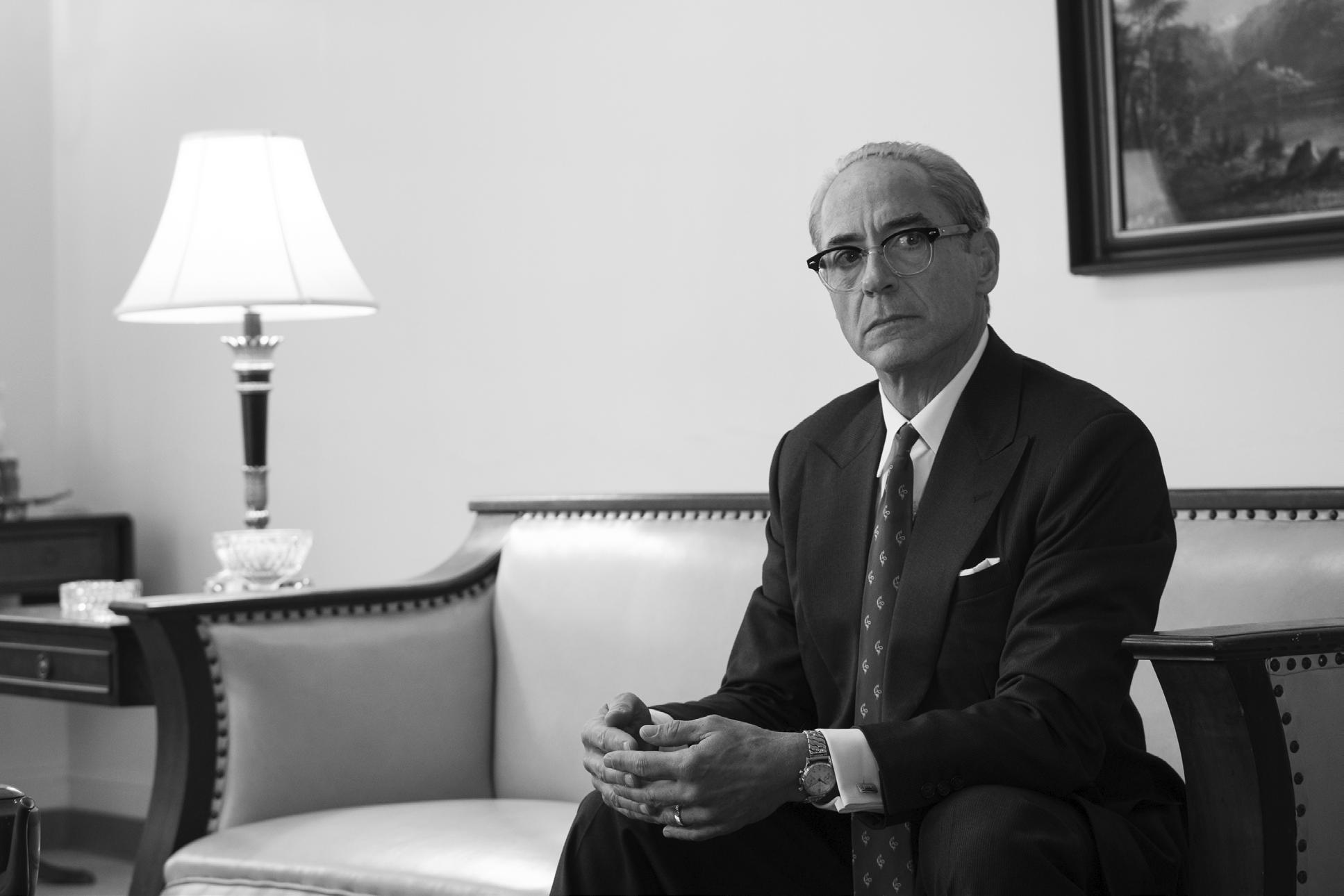
“I liked hiding behind the blimp,” Gordon admits. “It made me feel less intrusive for the actors. I finally switched on Dunkirk when I knew I would have to carry everything I needed all day. At wrap one evening, I was walking with Kenneth Branagh the mile back to shore, along the mole that jutted out into the English Channel. He asked where my blimp was. I explained how the camera I had was silent since it didn’t have a mirror moving with each exposure. I also told him about my fear of being more of a distraction with my face exposed. He kindly assured me that wasn’t the case, and I decided to let that anxiety go – although I usually shoot using the viewfinder rather than the rear monitor with that in mind.”
Ever the innovator, Gordon has had several exciting opportunities to stretch her creativity in the past few years. A case in point was shooting stills in an LED volume for Season 1 of The Mandalorian [Opposite page 17 and ICG Magazine February/
March 2020]. “It was wonderful to be shooting in a space that looked real as opposed to a blue or green screen,” she recounts. “At that time, I was using a Canon 5D Mark IV for the gallery work and the Fujifilm XH-1 bodies for the Volume. I asked ILM’s ‘Brain Bar’ group, who were working the computers on stage, how to avoid the dreaded rolling shutter banding that occasionally appeared, especially in low light or at fast shutter speeds. The suggestion was to adjust the shutter speed to increments that weren’t available. I managed to come up with workarounds; but happily, with newer cameras, like the Fujifilm XH-2, these issues are less of a challenge. None too soon since now so many light fixtures also use LED technology.”
Most recently, Gordon went back to her documentary roots for Chris Nolan’s epic summer release Oppenheimer (page 15, above, and ICG Magazine August 2023], shot on location in New Mexico and other states. “Because it was based on true events and real people, we worked hard to create historically accurate images of the time and events,” Gordon shares. “Working with Chris Nolan is very specific. The set is minimal, with few people, no video village, no place to sit down. It’s not easy, but Chris understands and values what each crew person has to offer. I especially loved documenting the work of Visual Effects Supervisor
Andrew Jackson and Special Effects Supervisor
Scott Fisher in what I called their ‘mad scientist lab.’ It was marvelous.”
When Gordon isn’t traveling around the world on a production, she’s trying to support and promote her fellow still photographers. “When I first started shooting stills on set,” she explains, “we didn’t often run into other photographers. Usually just at the lab or at a studio photo department. That changed when Peter Sorel founded the Society of Motion Picture Still Photographers [SMPSP] in 1995. It allowed us to get to know one another and our work, and help each other out. Considering we are all competitors for the same jobs, it has been an amazingly supportive group.” [Gordon also represents unit still photographers on Local 600’s National Executive Board.]
Despite some seismic industry shifts throughout Gordon’s career, technological and otherwise, it’s clear her passion has never waned – and she’s eagerly looking ahead to future challenges. “Unit still photographers have to love what they do,” she concludes, “because it requires skill, stamina and diplomacy to do well. It’s not just the time you put in on set, it’s also about really paying attention, figuring things out on the fly, and making sure you’re always there, out of the way and ready.”

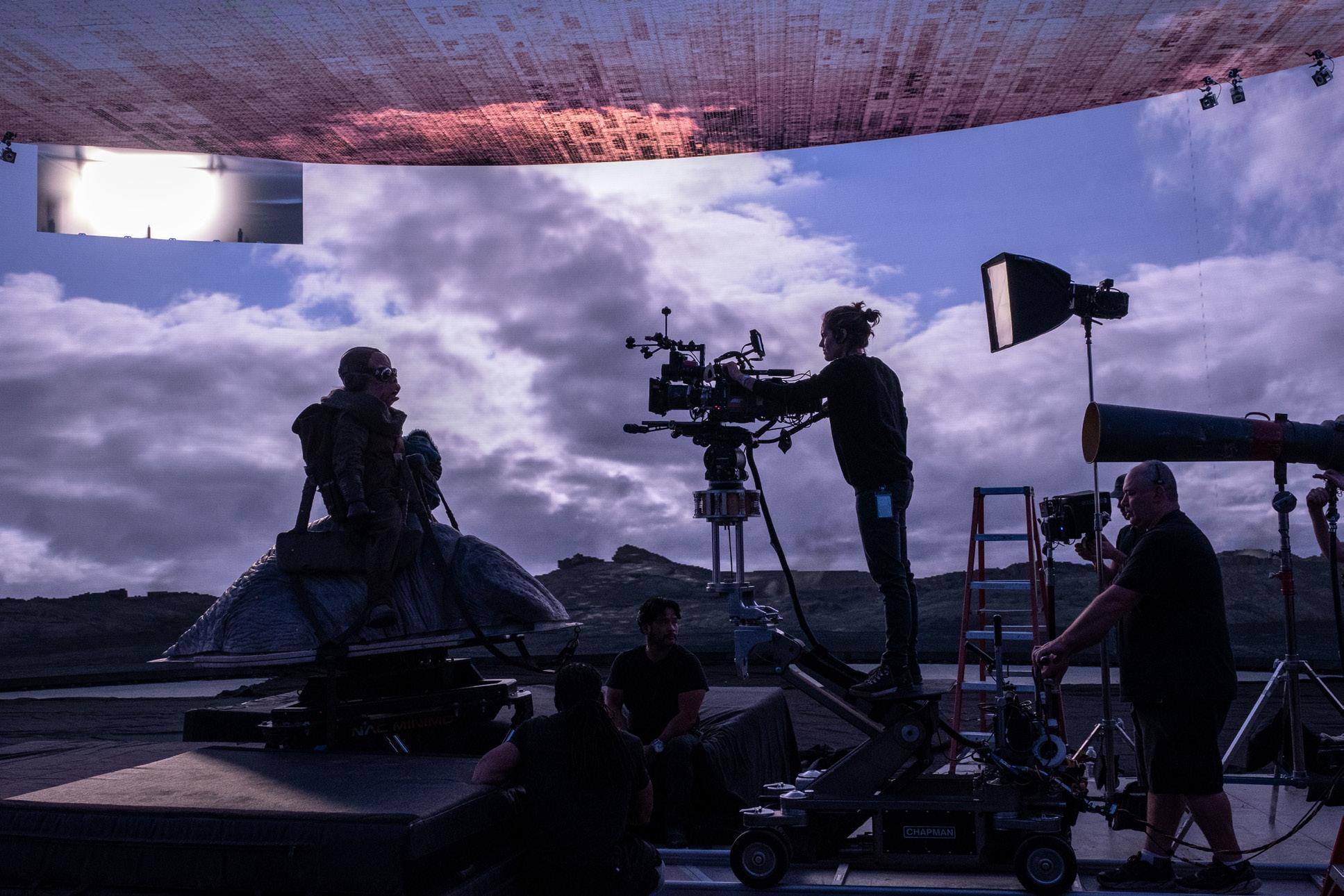
 BY PAULINE ROGERS
BY PAULINE ROGERS
FEATURE 01

The tight confines of a Chicago sandwich shop, in The Bear’s debut season, was a perfect environment to highlight a dysfunctional “family” trying to save a failing business. Season 2, however, serves up a buffet of different storylines. Yes, confrontation and confusion are still a prime ingredient of this 13-timeEmmy-nominated series, which in Season 1 centered around Carmen “Carmy” Berzatto (Jeremy Allen White), a young, award-winning chef from the fine-dining world who returns home to run his deceased brother’s neighborhood sandwich shop (modeled after the real-life eatery Mr. Beef). But Season 2 of The Bear changes up the menu, offering not just the inner workings of how Carmy and his rough-aroundthe-edges kitchen staff build a new location for the restaurant but also how the characters fit into one of the main stars of the show, the city of Chicago.
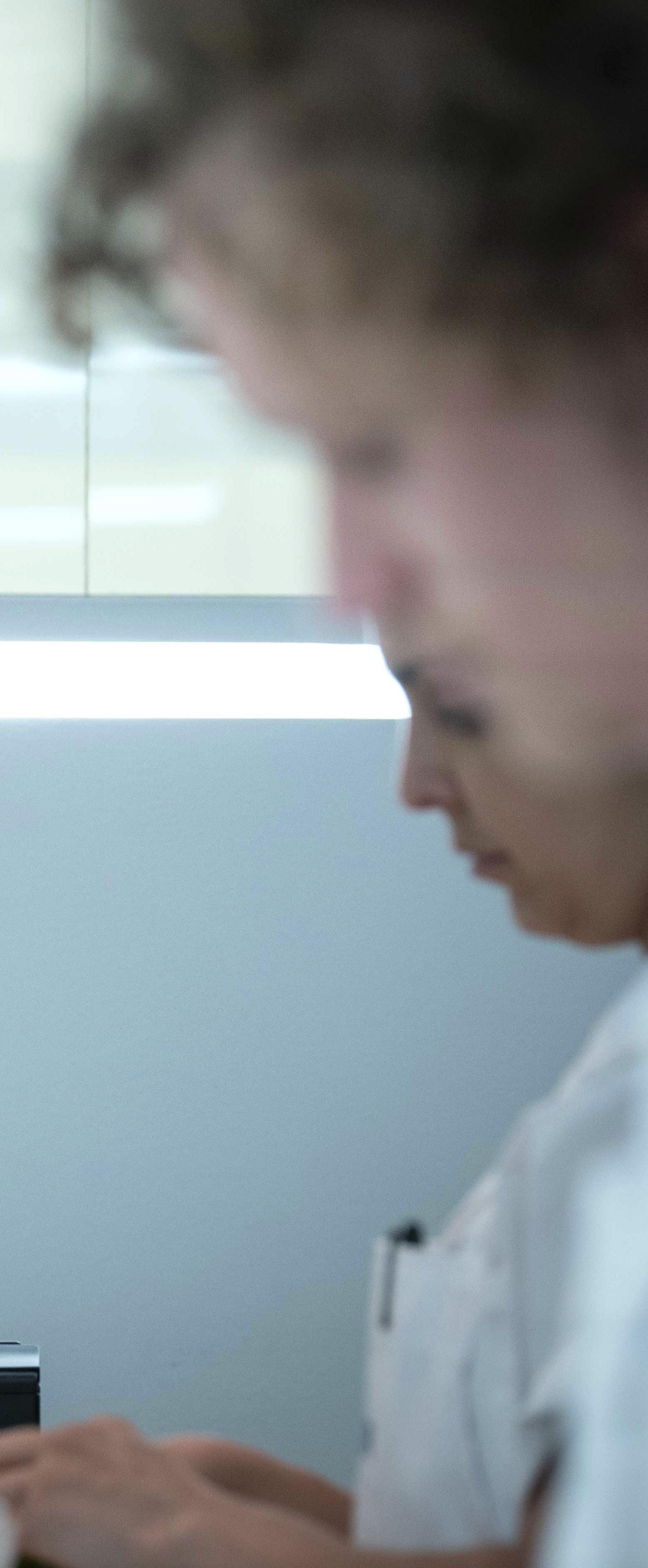
“We want to make sure viewers understand how important Chicago is to everyone – not just the characters but the filmmakers who live here and make this series,” explains The Bear’s Director of Photography Andrew “Drew” Wehde. “Throughout the 10 episodes [shot over 45 days], we take the audience on a tour of what makes the city so unique. We visit restaurants like Pequod’s, Kasama, Publican, Avec, and places like Margie’s Candies, Giant, and Elske. We wanted to pay tribute to those who have been relentlessly churning out incredible food for years and those new to the scene with that same devotion and desire.”
That’s a tall order, and the only reason the team could pull it off is the close creative relationship between creator/director Chris Storer and his longtime collaborator Wehde, who have been working together for more than a decade. Wehde understands Storer’s storytelling style, adding that “my whole camera team is encouraged to take those extra moments to discuss and understand every scene, every beat, and highlight all these beautiful moments.
“We talked a lot about season two and our desire to make it feel big, more cinematic than season one,” he continues. “Every location was prepped and pre-rigged for a variety of lighting choices, all of which were controlled remotely per our dimming board operator [Neil Adamson].” The idea was to go into each location with a plan, but always have options to show Storer on the fly, providing what Wehde describes as “the ability to rift and play with ideas in the moment on location and stage that may feel more aligned with the performances we were seeing during the rehearsals.”
Wehde’s crew has been together for years. They know each other well, which means he can rely on their creative input. “It allows us to work in a very non-verbal way,” Wehde adds. “Gary Malouf and I started together, and he’s operated on all of my work. Gary’s an extension of myself and is a major part of the look. We spend more time laughing on set than talking. Our shorthand is hard to explain.”

What’s not hard to explain (and key to making The Bear’s location work run smoothly) is the longtime team around Wehde who impact the efficiency of each set. Partners like Chief Lighting Technician Jeremy Long and Key Grip Dave Wagenaar have creative freedom, which is how
Wehde wants it. “As a cinematographer, it’s important to understand how much we are responsible for, and if I were to micromanage everyone, the work would suffer,” Wehde states. “I always say, ‘Embrace their focus and love. Let them run with it; I can always pull them back or help guide them on a specific path that I know will match the story best.’”
The intense collaboration with all departments also helps on the front end.
“Our Production Designer Merje Veski was on the same page with everyone when we started prep on the new season,” Wehde continues. “Her work is impeccable and precise. She can take any bit of information and transform it into exactly what we envisioned. The relationship between a cinematographer and production designer is crucial; it will directly translate onto the screen, so finding that bond is key.”
One prime example is the moment Wehde and Veski knew a new restaurant would need to be built for Season 2, they started conferring on the design. Wehde says his goal was to take Veski’s “incredible spaces” and find ways to marry light and space together. “I wanted the new kitchen to feel architectural with lighting,” he describes, “in a way that would remove any movie lights from the set. I wanted a space that would feel bright but also have shape and in-camera fixtures that would create interest.”
The pair were inspired by two classics of fine dining: Thomas Keller’s legendary The French Laundry (in Yountville, CA) and the double-Michelin-starred Chicago eatery Ever, created by Chef Curtis Duffy. In both examples, the linear lighting in the ceiling helps to define the kitchen spaces. So, the intention was to give the prep space a soft and beautiful light. Working closely with Wehde, Long built plexiglass soft boxes on the bottoms of all the hanging shelves. This became a focal point of the prep space and provided flexibility for shooting food in the last three episodes. “It gave the food a new look versus that of Season 1, elevating and matching the new restaurant perfectly,” Wehde says.
Veski also designed a linear window that divided the kitchen from the dining room. Wehde’s thought was to take the same linear lighting to the area around the window and into the swinging door. “Again, it gave us incamera practical lighting and a natural edge to bring a soft light source to the eye height of the actors,” he continues. “Construction

“WE WANT TO MAKE SURE VIEWERS UNDERSTAND HOW IMPORTANT CHICAGO IS TO EVERYONE – NOT JUST THE CHARACTERS BUT THE FILMMAKERS WHO LIVE HERE AND MAKE THIS SERIES.”
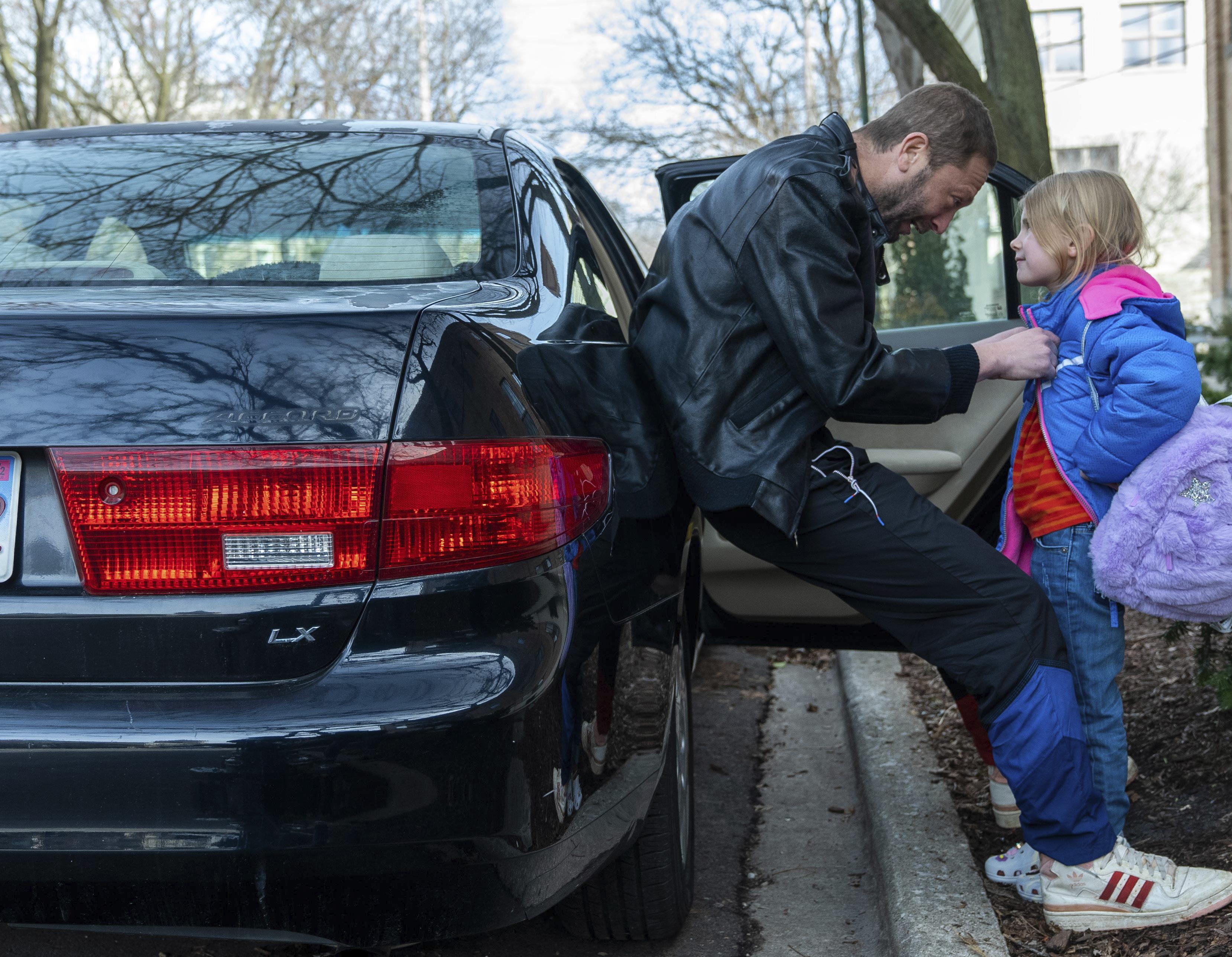
DIRECTOR OF PHOTOGRAPHY ANDREW WEHDE
designed a swinging door with electrical for us. It was beautiful and played a huge part in our blocking. Everyone looked their best around the expedite station. At times, prep felt like we were not making TV, but rather we were racing the clock to design and create a restaurant.”
When it comes to lighting innovation, Wehde calls Long a magician. “We needed to be able to shoot 360,” Wehde recounts. “And that puts a lot of pressure on a gaffer to think outside the box and give us a multitude of lighting setups, all remote controlled, to allow us to adjust based on any new blocking during rehearsals. We embraced LED fixtures with high CRI levels [Astera Titan and Helios Tubes, Creamsource Vortex8 and Vortex4]. Quality of light is super important to Jeremy, and his team works hard to make sure everything is programmed and, at times, even configured differently through the board to get the best out of the lights.
“Our shorthand is funny,” Wehde admits. “I am a naturalist at heart and like to harness the light and beauty of what might exist at certain moments that we have seen. Jeremy has this ability to decipher my nonsense into a detailed lighting plot for all locations. We paint with lights and adjust all perimeters until the first take. Then we stop. But it’s an absolute blast how much lighting has evolved in the last few years and how much we can impact the look and grade of the show through these LED fixtures.”
Camera and lens choices play a big factor as well. As Season 2 needed to feel like a natural progression, Wehde says, “The ALEXA Mini LF felt like the right tool to continue with. I love the large format, as, coming from photography, it’s the way I see the world. Lenses match and make more sense in terms of focal lengths in a large format, and it’s the space [in which] I feel most comfortable. I also love how well the LF can handle highlights, and we’d embrace that with the way we exposed the camera.” Season 1 was shot at 3200 ASA on the Mini LF, and that EI carried over into Season 2. “It pushed my protection into highlights and gave us a more natural noise pattern in the midtones and highlights,” Wehde adds.
When it came to lenses, Wehde says Panavision, a key partner for many years, has helped him work toward building the perfect set. “In every show or movie I do, we take the serial numbers from the previous show and re-evaluate them and look to see if we can improve on specific focal lengths. I have been shooting with a modified H series set for the last three years, with specific serial numbers and new serial numbers that have come and gone over the years. Season 2 of The Bear brought the opportunity to dive even deeper into specific focal lengths with Dan Sasaki and Guy McVicker. This led us to find better-matched H-series lenses.”
Sasaki modified several one-off H-series lenses for Wehde. “One is a 50-millimeter H with a close focus of 14

inches and a T1 stop, which is an absolute gem,” Wehde beams. “The H series gives this classic soft feel with an organic focus roll-off. Not to mention they are very fast, which provides a ton of creative choices with depth-offield control. These optics give such a rich character to this show, and I truly believe they are a reason for the look.”
A-Camera 1st AC Matt Rozek adds, “Knowing the pace of the show, we prepped three cameras to have available basically at any time. [A-Camera 2nd AC] Matt Feasley and I dealt with the A-camera [handheld and studio] and the C-camera [dedicated to the Ronin], while [B-Camera 1st AC] Sam Knapp was almost always in studio mode on the Panavision 11:1. The Ronin, mounted on the dolly on the stage, allowed us to move through the shot list at a fast pace because we rarely had to put down track or even dance floor.”
“Then, when it was time to move on to handheld or studio,” Wehde picks up, “I could send Matt [Feasley] out to the cart to put a lens on and prep the other body while we finished the last take or two. When we did move on, Matt could walk in right away and put the camera onto the operator’s shoulder so he could immediately start lining up the next shot. I cannot stress this enough –there is very little wasted time on this set. So, everyone has to be on their game, ready to go from the moment the first AD says we are in.”
Wehde and Key Grip Wagenaar designed the system – the DJI Ronin 2 as a remote head-on A-camera dolly –so that depending on the surface, we could always roll on the ground, giving the dolly grip freedom of movement and the operators the chance to react to actors when a beat felt right. The stages were also designed to allow the dolly to roll anywhere. On location, the team adds a Custom Easy Raptor arm, the Raptor ISO 3, and a variety of vibration isolators depending on whether the Ronin is under- or over-slung, with the goal to always let the dolly be pushed on streets and sidewalks and, ultimately, provide the freedom of never shooting track.
Another essential element was on-set color and the desire to deliver dailies as close to the final color as possible. It’s a process Wehde developed gradually, adding a tool, or information, with each new show. In Season 2 of The Bear , what’s captured on set is what viewers see at home. “Thanks to [DIT] Tom Zimmerman’s knowledge of color and workflow, I can jump into the tent and make adjustments,” Wehde describes. “Tom keeps me honest and tracks it all precisely.”
As Zimmerman describes, “We utilize Pomfort Livegrade Studio as the software, and Tangent element TK panel to adjust shadow and highlights as well as Tangent KB panel to adjust color. Drew prefers this because he can isolate both the color channel along with high, medium, and low, using two factory-calibrated Flanders DM-240 monitors for color reference.” Wehde and Zimmerman also have Printer Lights set up on a Streamdeck to provide the DP with the ability to do quick RGB pushes, “but more importantly,” Wehde adds, “with
the speed we run, I can do full exposure pushes in one-third-stop increments. Post receives as close to a final product [as possible] every single day, Editorial gets to cut the show with the look that we love, and our producers and the studio review the day’s material in the intended way that we have envisioned the show.”
Zimmerman, who’s worked with Wehde for a long time, calls it a “pleasure” to see the Chicago-based camera crew get the recognition they deserve. “At the pace we run, we don’t have time for things not to work,” the DIT explains. “That means adding or upgrading requested pieces on my cart, having a backup plan in place and ready to implement, or building a smaller color station for us to use in small, third floor locations, like Carmy’s and Sydney’s apartments. I could not do this job effectively without the seamless back up of Digital Utility Sonia Jourdain and Loader Batoul [Raeyan] Odeh. Those are unsung positions, and they often carry the weight of the camera department without any complaint. I’ve never had any worries about camera footage being backed up or monitors or antennas being moved. I would go to do something and realize it was already done.”
Regarding the show’s other big star, Chicago, Rozek says, “the beautiful and unique look we had for the city this season came about almost by accident. We had spent the better part of a day shooting Ayo [Sydney Adamu] on the train for her episode where she traverses the city and hits a lot of restaurants. We had finished with the scripted work and were headed back to the station where we could unload, so we just wheeled the dolly with the Ronin up to the front of the train and started shooting out of the front – crazy up-angles, slow pans as we came around corners in the loop, dutch angles as other trains passed on opposing tracks. When people saw the dailies the next day, they loved it, so we started making plans to do more. By the time we wrapped, we had shot the city from every angle, from every mode of transport – train, boat, helicopter, city driving, freeway driving, everything. We got some unique perspectives that don’t always get showcased in Chicago.”
Zimmerman agrees, adding that “one of the “biggest surprises while watching Season 2 at home, was the use of all the helicopter, train, and other B-roll footage” of
the city. “It really is a valentine to Chicago. I loved that we didn’t just use stock footage or common angles of the city. There are shots of neighborhoods with the train slicing thru which is so representative of the way the city is laid out. “
B-Camera Operator Chris Dame says he has lived in Chicago for 30 years and is “proud of how many Chicago characters are a part of the story this season. For all the city exteriors, the B-Camera was on the Panavision 42-420. This is the same lens I had on season one. It has so much character and shines from 300-420 millimeter.”
Dame adds that one of the freedoms he’s given is that “I can roll the camera at any time. This means Sam [Knapp, B-camera 1st] is always ready to show off his talents. Being able to pop off inserts or go to any part of the frame, with the assistance of our dolly grip [John] Sircher] at any point, is a unique aspect of this show. Having a script supervisor and sound department that are ready for that is unique as well.”

Where would a story about rebranding a restaurant be without all those food inserts? As Wehde describes: “Shooting food is always interesting, and season one is where we found our style. It always landed in the world of graphic closeups on our 11-1 zoom lens. It was always the challenge of never shooting the food to shoot food but rather incorporating the food photography into the scenes, and always keeping the kitchen alive and busy.
“Season two kept this philosophy,” he continues, “but the introduction to the new restaurant meant an adjustment that aligned more with their desire to open a restaurant worthy of a Michelin star. This combined the season one long zoom lens work of digging into the details of the food, the details of the build, and the creation and execution of a dish with a second perspective that highlighted and celebrated a more static, curated food frame, which follows the process from raw to a finished plate. This gave Editorial the options on which visual style makes the most sense in those moments of the story.”
The biggest food prep and delivery comes at the new location in Episode 7, Fork, which was shot at Ever. Wehde says the goal was “to capture this space with the utmost respect to the existing interior and lighting design and to protect the vision of Chef Duffy and his team. We approached the food differently, using a 50- and 75-millimeter
“AT TIMES, PREP FELT LIKE WE WERE NOT MAKING A TV SERIES, BUT RATHER RACING THE CLOCK TO DESIGN AND CREATE A RESTAURANT.”
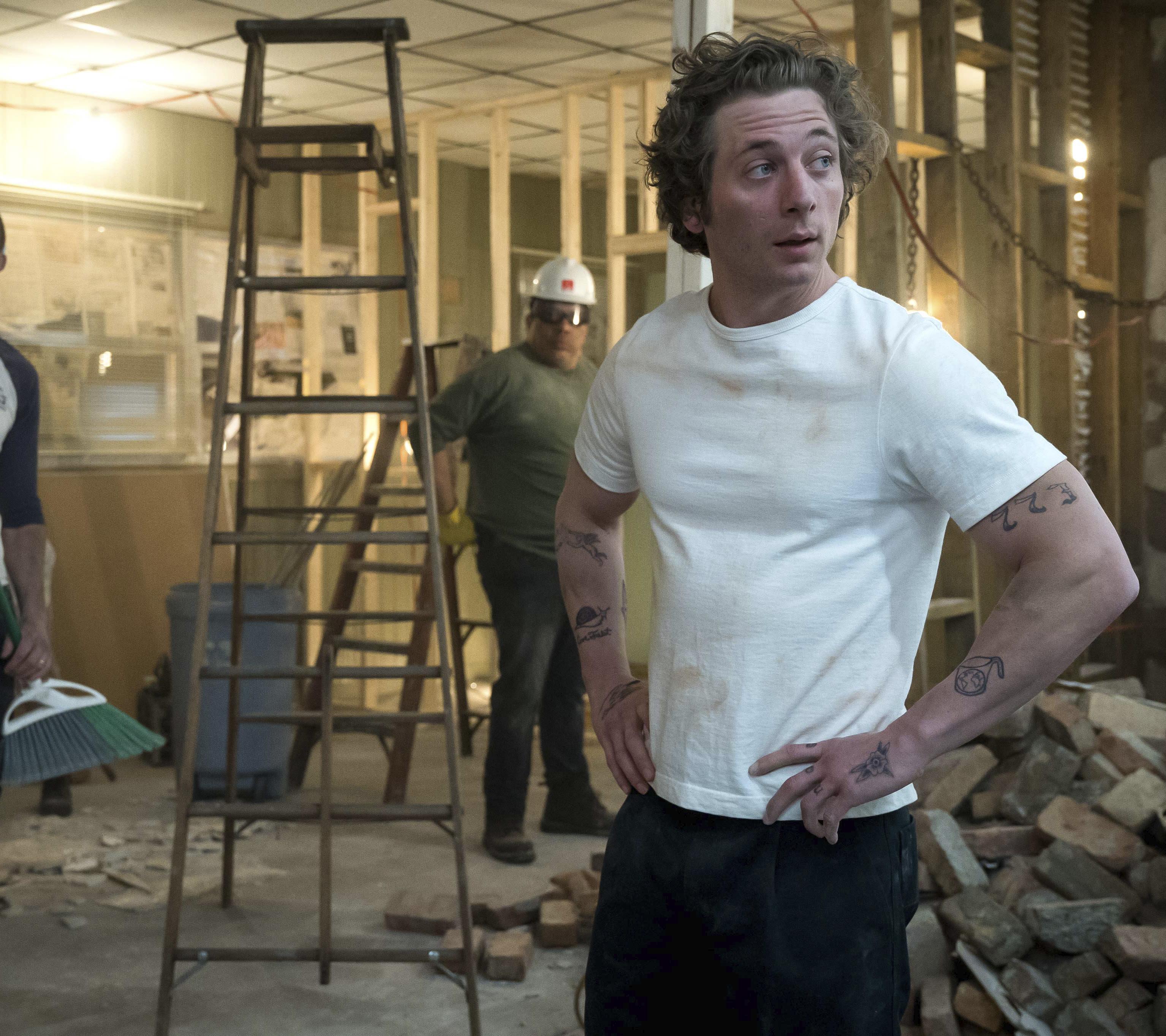
ABOVE/LEFT: FOR THE BEAR’S NEW MICHELIN-STARRED EATERY IN SEASON 2, PRODUCTION DESIGNER MERJE VESKI WAS INSPIRED BY TWO CLASSICS OF FINE DINING: THOMAS KELLER’S THE FRENCH LAUNDRY (IN YOUNTVILLE, CA) AND THE DOUBLEMICHELIN-STARRED CHICAGO EATERY EVER, CREATED BY CHEF CURTIS DUFFY.

WEHDE SAYS IN BOTH EXAMPLES, THE LINEAR LIGHTING IN THE CEILING HELPS TO DEFINE THE KITCHEN SPACES. “SO, THE INTENTION WAS TO GIVE THE PREP SPACE A SOFT AND BEAUTIFUL LIGHT. “

lens with diopters. This gave the world a different feel and made the food huge.”
Knapp recalls spending many days in Ever and shooting a lot of food.
“We would spend hours filming the actual chefs of Ever prep, cook, and clean,” he recounts. “Most of the time, we were on tight H series lenses with diopters – the reason being that most of the H series’ close focus goes to 2 or 2.5 feet. We wanted to throw on diopters and get as close as possible, sometimes mere inches. It was fascinating to watch and film those professional chefs doing their work, and something that I tell people was a highlight for me in working on this season. Those chefs are borderline running a military operation with hardly any words spoken. Each chef is focused on their job and performing it at the highest degree of difficulty and executed to perfection. It was a lot of fun seeing that world.”
One of the standout visual elements of Season 1 was a full episode oner. Season 2’s Episode 10 allowed the team to do another extended take, a 16-minute cut followed by 20 minutes of scene work. “This shot is a testament to how we raised the bar this season,” Rozek exclaims. “It’s not as long as last year’s oner, but it is technically more complicated. It takes a certain amount of insanity to do what we did as a oner – going from the most nuclear of lit spaces in that kitchen, where everything is bright white and reflective stainless steel, to the muted ambience of the dining room, where we stop and have conversations at a half-dozen tables, even back into the bathroom. The amount of lighting cues and camera choreography and details that went into the planning of the sequence was staggering. And that’s before you even add in all the food that must be precisely plated, the servers, the background, and the challenge of shooting in a working restaurant – because even though it is built on a stage, that is essentially what it is.”
Wehde explains that for the Season 2 oner, “we decided to maintain our light
levels throughout the take and utilize a Variable ND we could control remotely with my ARRI Hand Unit. This allowed us to maintain the depth of field at a T2.8. We had a base level in the dining room; the kitchen was three stops brighter, and the kitchen island was five stops brighter still.
“We couldn’t adjust the light level because it would change the ambient glow in the dining room,” he adds, “and I didn’t want a severe iris pull. Gary Malouf pulled off another handheld oner and even found ways to improve and make it bolder than in Season 1. Chris Storer put together a plan on overheads that helped all of us understand where each of the mini scenes would take place, and, with our experience from last season, we dialed this in with only one day of rehearsals, followed by five takes the next day, all by lunch.”
Besides the complex oner, Season 2 also includes several fun and unusual angles, like shooting through plexiglass as a menu is planned with a red marker; or from the inside of a wall that had been broken through. Two scenes that stand out include one from Episode 9, where the pressure is on to prepare the restaurant for its big opening. When Carmy sees a table that hasn’t been assembled correctly, he crawls, with Sidney, under the table to make it safe. The moment was a perfect opportunity to showcase the dolly and Ronin rig.
“We could scrape the floor very slowly, working our way to Carmy and Sydney,” Wehde recalls. “Without that rig, we would have needed an arm, and there never would have been room for that tool inside that set. It was also a great example of the organic development of a shot. It being a single uncut scene was never planned, but with Gary on A-camera and Mark on the dolly playing the movement, Chris saw the magic, as we did.”
Wehde also cites a shouting match between Richie [Ebon Moss-Bachrach] and Carmy, where Carmy is locked in the freezer. “We cut the wall out and did it practically in a split screen,” Wehde explains. “This scene came to Chris
Storer during the middle of shooting an earlier episode in the old restaurant. Every day we would come to check on the construction process of the new Bear. He had this brilliant idea of shooting the final fight between Carmy and Richie as a split screen, and our construction supervisor loved the idea and modified the build to accommodate. The scene was shot on our last day of principal photography.”
Rozek says it’s those types of shots and much more that make The Bear utterly unique in the world of episodic television. “I would challenge anyone to find another production that does the kinds of things we do on the timeline that we do them,” he concludes. “But then I look at our amazing [all-Chicago-based] crew, and it’s completely understandable. It makes me very excited for what is in store next season. We’ve all made it clear how much we love working on this show – and how anxious we are to return.”
Zimmerman’s thoughts echo Rozek, also describing The Bear as an outlier amongst all other shows he’s been on. “Two months from camera wrap to dropping on Hulu,” he concludes. “That fast turnaround comes from two things: Chris Storer’s vision and mental editing as we are shooting, and Drew’s embracing of on-set color correction and delivering a show that is close to final product. Drew also was committed to using a local Chicago crew full of people he knew and trusted. Our first season, we were a tiny show, on one little stage at Cinespace [Studios]. We all knew it was something special, watching the actors go through their paces. It’s gratifying to see it explode in popularity and critical praise.”
Wehde says The Bear’s massive success is directly proportional to the contributions of so many talented and hardworking filmmakers. “I am so proud to say this show is made in Chicago by a Chicago crew. As a community, we are showcasing that we can make and compete with the best in the world. I’m also proud to be born and raised in this city, and to have the chance to be working side by side with my friends and family on such a fantastic series.”
FOR A SHOUTING MATCH BETWEEN RICHIE [EBON MOSS-BACHRACH] AND CARMY, WHEN CARMY IS LOCKED IN THE FREEZER, WEHDE SAYS, “WE CUT THE WALL OUT AND DID IT PRACTICALLY IN A SPLIT SCREEN. OUR CONSTRUCTION SUPERVISOR LOVED [CREATOR/EP] CHRIS STORER’S IDEA TO DO THE SPLIT SCREEN IN-CAMERA, AND MODIFIED THE BUILD TO ACCOMMODATE.”
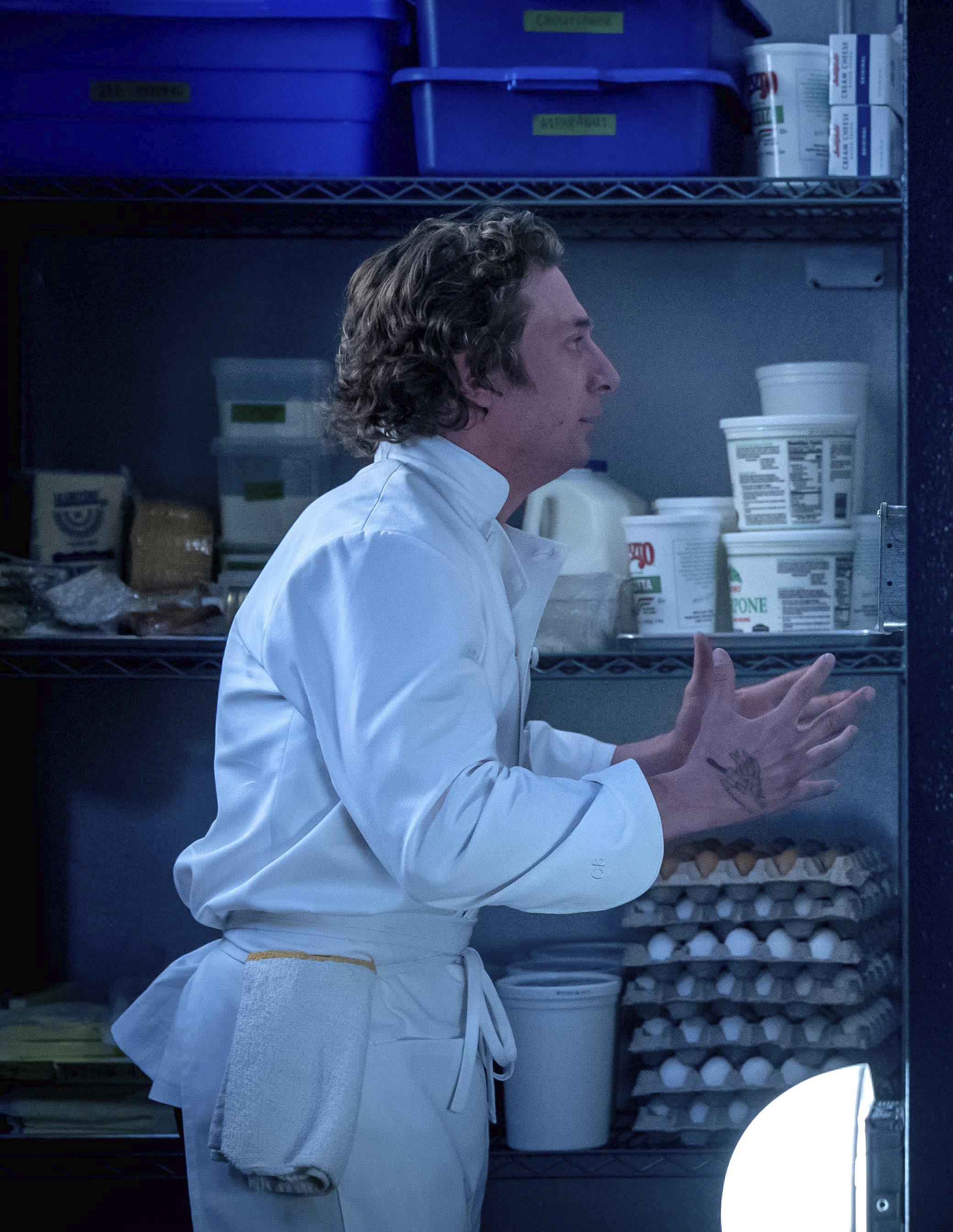
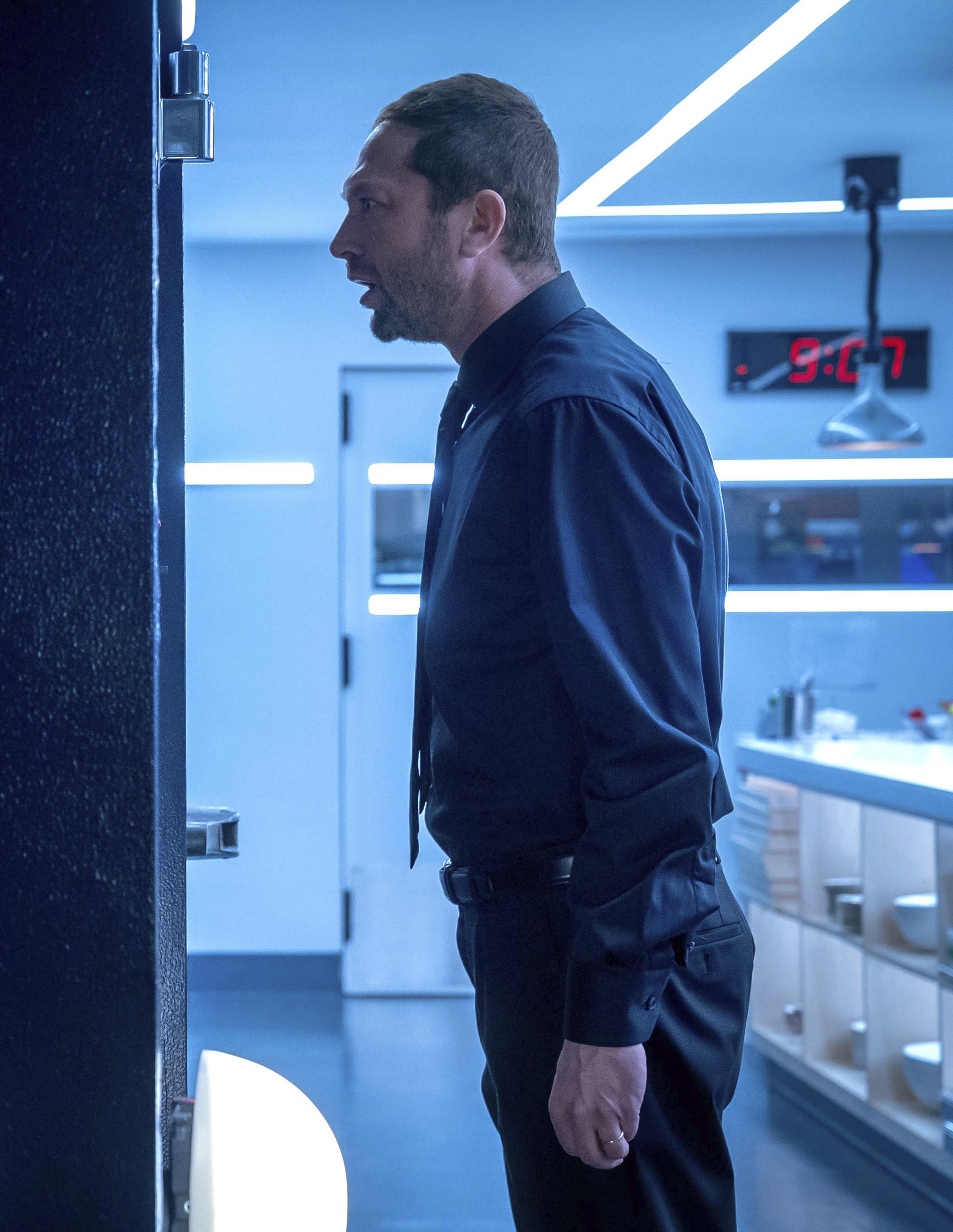
Season 2 of The Lincoln Lawyer visits rarely filmed pockets of L.A. – from Chatsworth to Frogtown and everywhere in between.
 BY PAULINE ROGERS
BY PAULINE ROGERS
FEATURE 02
In an interview with the official Netflix fan site, Tudum, done before the WGA strike, Writer/Producer Ted Humphrey described Los Angeles as “such an atmospheric city – there is a lot more to it than the stereotype of Hollywood and celebrities. It is this mysterious, brooding entity. It’s bright and sunny, but that just serves to accentuate the darkness lurking around every corner.” What Humphrey was referencing was the backdrop for Season 2 of The Lincoln Lawyer, the popular Netflix crime series he oversees, created for television by David E. Kelley and based on Michael Connelly’s novel The Brass Ring The Lincoln Lawyer stars Manuel Garcia-Rulfo as Mickey Haller, a criminal defense lawyer and recovering addict (and the half-brother of Connelly staple Harry Bosch) who works out of the back of his Lincoln as he “navigates” the mean streets of L.A.

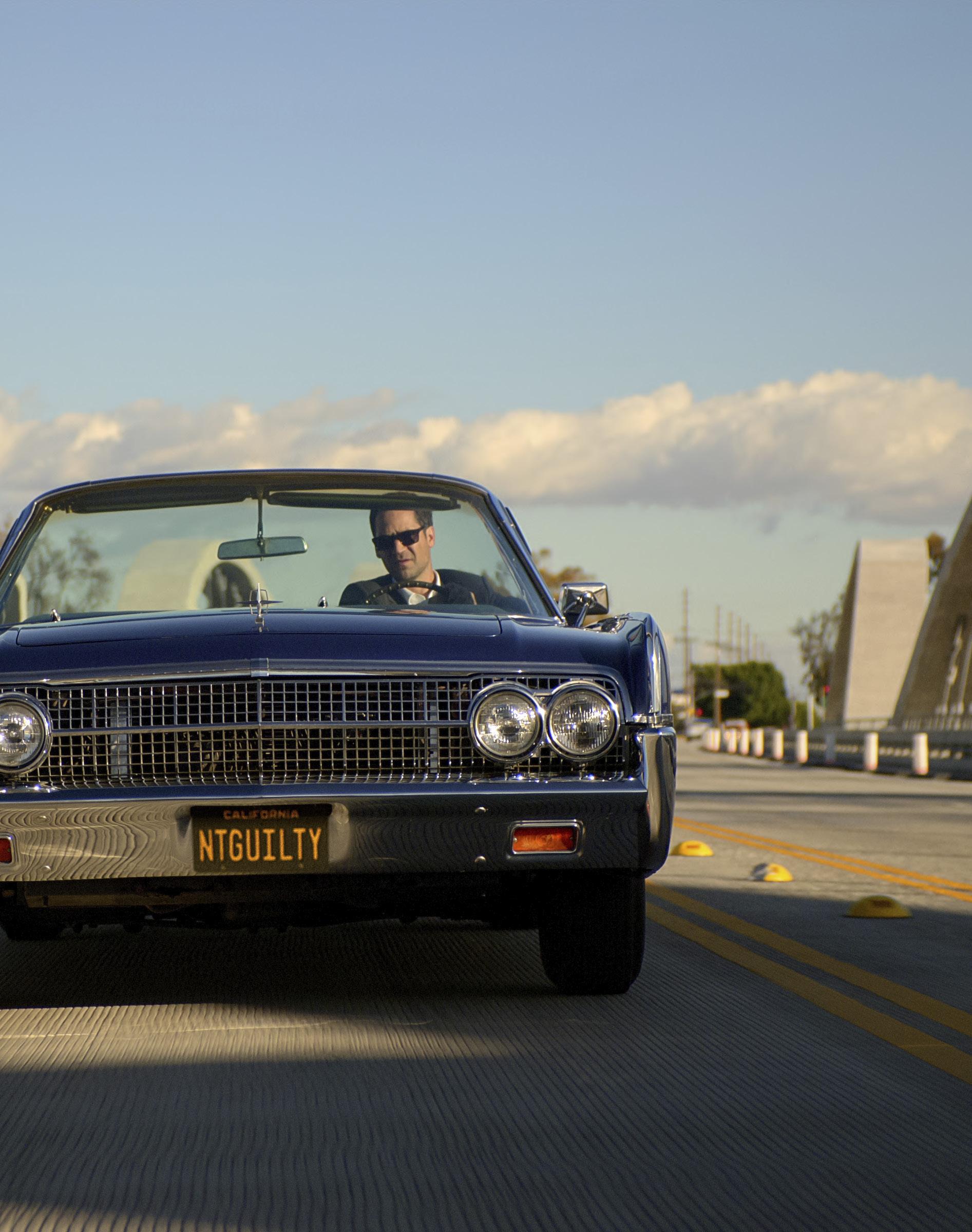
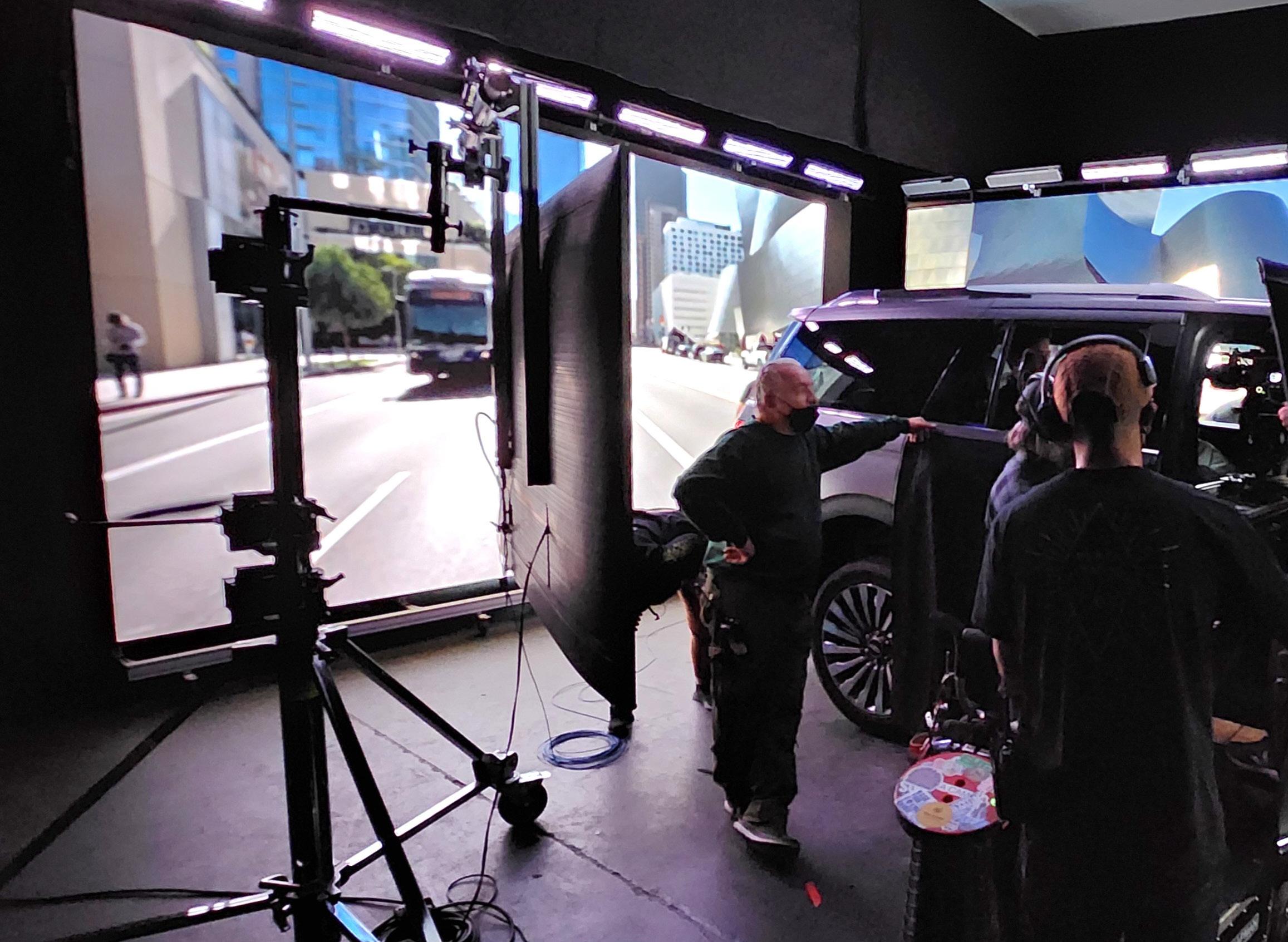

CO-SERIES DIRECTOR OF PHOTOGRAPHY PEDRO GÓMEZ MILLÁN SAYS HE’S ALWAYS CRITICAL OF SHOOTING CARS, AND “WHEN IT ISN’T DONE RIGHT, IT THROWS ME OFF THE STORY. THE BIG THING,” HE NOTES, “WHEN SHOOTING CARS ON A VIRTUAL PRODUCTION STAGE [ABOVE] IS HOW TO INCORPORATE THE HAPPY ACCIDENTS THAT YOU GET WHEN YOU’RE DRIVING ON THE ROAD – THE SUN OR A RANDOM STREETLIGHT THAT HITS THE LENS IN UNEXPECTED WAYS.” / TOP IMAGE: COURTESY OF STARGATE STUDIOS
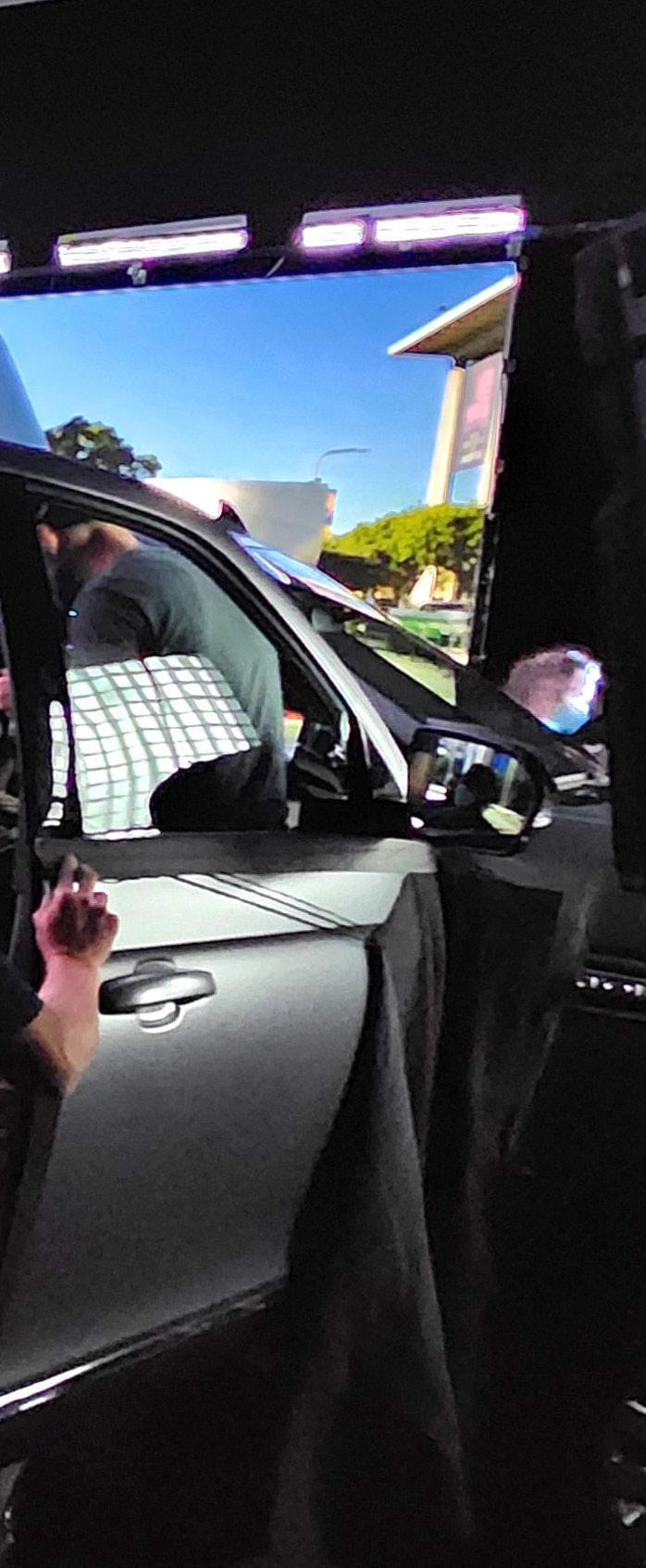
Season 1, delayed for more than a year by COVID, offered mostly familiar Westside locations for the L.A.-based story. For Season 2, with the pandemic mostly in the rear-view mirror, the creative team upped the ante, with even the few constructed locations looking and feeling like an undiscovered city. Whether it’s Haller’s new upscale law offices (with all those glass walls) or the many coutrooms where he plies his trade, the show’s locations provide a sense of time, place and character. In the same Tudum story, Location Manager Richard DePatri added that “L.A., while iconic, is also very recognizable – for better or for worse. I think the key is to present locations that fit the story and the scripts, but also to stay away from the main tourist attractions.”
In Season 2, Lincoln Lawyer fans get served the offbeat. From the Elysian restaurant in Frogtown (owned by Mickey’s lover/client Lisa Trammel, played by Lana Parrilla) to The Paseo Club in Valencia (where we see warm and fuzzy conversations with Mickey’s mentor, David “Legal” Siegel, played by Elliott Gould); and from The Cowboy Palace Saloon in Chatsworth, home of the Road Saints, the Sixth Street Bridge, and the L.A. River Walk to The Equestrian Center in Griffith Park, there’s something for every Angeleno.
Directors of Photography Abraham Martinez, a 25-year L.A. resident known for 61st Street , Queen of the South , and The Chi ; and Pedro Gómez Millán, AMC, born and raised in Mexico City, with credits that include Search Party , Little America and Gentefied , both agree Season 2 is a great ride. Millán shot the first six episodes and Martinez the last four.
“Season one was focused on the Westside of L.A., Malibu, and Santa Monica and the tech world,” Millán explains. “For season two, we wanted to explore the Eastside and the gentrification in those neighborhoods. That meant delving more into an earth-color palette and finding the right spots to place the camera to feature those great locations.”
Toward that goal, Millán tested different lenses and settled on the Angénieux Optimo primes. “I don’t always go for really sharp lenses,” he adds. “But I was fascinated by all the different looks and options [the Optimos] provided. We detuned the full set and did a bunch of tests at Camtec. They helped us find the right level of fall-off on the glass. We ended up shooting with IOP Glimmerglass 1/16 on the entire set. We wanted a more
dramatic look when framing portrait shots, and the 28 millimeter and 60 millimeter were detuned to increase the fall-off.”
Millán also chose Angénieux’s Type M1 50-mm F0.95 for more expressive moments, such as in an ER hospital scene. The lens was originally designed for low-light surveillance in the early 1960s, making it one of the earliest ultra-speed photographic lenses ever built.
“It has an incredible smooth focus falloff and natural, flattering skin tones,” Millán continues. “We usually shot them around T2 stop to give my focus pullers a fighting chance. In the ER room, we went all wide open as Mickey is critically injured. I didn’t want the focus to be sharp at all times, so the AC’s had to find it.”
The next step was to work with DIT Francesco Sauta to create the look.
“The idea was to soften the digital sharpness of the Sony VENICE cameras using the cinematic look of these Optimo lenses,” Sauta explains. “The classic soft filters 1/16th further detuned for more severe fall off on the ‘portrait’ lenses.
“As for the LUT creation,” Sauta adds, “we wanted the city of Los Angeles to be its own character. It was important that the different cultures and textures be made clear: the show’s content is, in fact, organic with this principle. We kept the warmth and vibrance of the colors while still protecting the cleanliness of the blacks. I worked with Picture Shop labs to keep uniformity and continuity between the on-set stills, CDL’s, and the dailies. The aim was to maintain The Lincoln Lawyer tone through many different locations while controlling the exposure.”
On set, Sauta used Livegrade Pro for CDL’s stills and a library/archive of the scenes. “It’s reliable software that makes every CDL and all stills quickly accessible,” he adds. “Silverstack XT was used for data management and quality control, with Odyssey 7Q+ used for on-set exposure check and noise control.”
For the courtroom sceness, Millán and Martinez wanted to keep a sharp contrast. Chief Lighting Technician Eric Sagot and his team used high and warm exterior lights while keeping the interior lights cool and low. For the exterior night scenes, color temperature was kept between 3600 and 3800K to maintain warmth. Thanks to the high sensitivity of VENICE 2, a base ISO of 3200 was used to catch the city lights in the background.
That city light is best seen off the deck and out of the glass windows of Haller’s house. Perched atop Baldwin Hills, it was a practical location in a residential area and tricky for the large-sized crew to access. “It had a large drop right after the terrace and no place to rig film lights,” Millán recalls. “We had a bunch of scenes at night on the terrace, so we had to be smart and fast, especially in episode one. Eric [Sagot] rigged a row of small AX3 LED lights that worked as practicals. We could dim every light individually, depending on the camera’s angle, and it helped to create mood, motivate light and still keep it naturalistic.” Because the view of Los Angeles is so powerful, they added cooler lights below the terrace that created a balance and color contrast with the warm practicals of the house.
For Haller’s newly redecorated law offices (born out of a successful case at the end of Season 1), Production Designer Andrew Leitch came up with a set that allowed the team to let more light into the space and open it up. “We decided to lower the ceilings and feature the skylight that was there in season one but that wasn’t featured,” says Millán.
The design incorporated a lot of glass with depth so that the action could be seen through different rooms. All the glass pieces were slightly gimbaled to give the camera crew a chance to fight reflections, but the crew admits it was still a bit of a headache.
“Once you bring two cameras and start lighting, there were reflections everywhere, and we could only gimbal the glass pieces so much until they started to look out of place,” Millán adds. “So, once lit, we had to go through the process of getting rid of reflections before calling the first team, which added some extra time and stress. Sometimes light reflections would bounce off two or three different layers of glass, and trying to flag those individually was timeconsuming. Typically, the best solution was to remove some of the glass pieces completely. It is very hard to tell if there is glass in the background, especially if it’s deep and out of focus, and people are looking at the action in the foreground.”
One key part of Season 2 is seeing L.A. through Mickey’s POV as he takes his business on the road. The executive producers and showrunners expressed dissatisfaction with how the cars were shot in Season 1, so there was a high expectation for change.


“As a cinematographer, I am always critical of shooting cars, and when it isn’t done right, it throws me off the story,” shares Millán. “The big thing for me when shooting the cars on a virtual production stage is how to incorporate the happy accidents that you get when you’re driving on the road – the sun or a random streetlight that hits the lens in unexpected ways.”
Production scouted companies that could provide that look and landed on Stargate Studios, founded by Sam Nicholson, ASC, who is also CEO of the Pasadena, CA-based VP company. According to Ross Fineman, executive producer, “the Stargate visual effects team enabled our Season 2 driving scenes to open up a more vivid, beautiful way to tell our stories with their ThruView virtual production process.” Stargate shot custom photographic plates with stabilized 9 × 8K camera plate shooting rigs combined into 64K horizontal 360 coverage. “On set, our ThruView, which consists of mobile LED walls, multi-camera tracking, 360 playback, and pixel-tracked kinetic lighting, was combined into the portable VP system,” Nicholson explains. “After a one-day installation on the shooting stage, we were able to cover eight pages of virtual production driving scenes per day with no post enhancements or fixes. Block shooting multiple episodes through the season allowed production to control costs with fantastic, photo-real results in camera.”
And what of the show’s namesake vehicle? Three Lincolns were used: one SUV with tinted windows and one without tinted windows, both on the virtual stage, and one vintage convertible used practically outside the virtual stage. Key Grip Chris Garlington rigged the camera mounts, allowing three cameras in the car. They used a small Sony FX3 to fit in small spaces and get more interesting angles. As 1st AC Joe Cheung describes: “The FX3 and FX6 were perfect small form factor to get us into small spaces for the driving shots, where we could shoot over the wheel, do low scraping hood shots, and [be] on the floor of the car.” They also brought the U-Crane arm for locations that included Pacific Coast Highway, Sunset Blvd, the Sixth Street Bridge, etc.
Of the few SUV exteriors, Millán recalls one in Episode 2 where Izzy Letts (Jazz Raycole) is driving Mickey, and some construction is slowing down traffic. The script was a 1/8 page read, a simple beat. But, as with many “simple” shots in Hollywood,

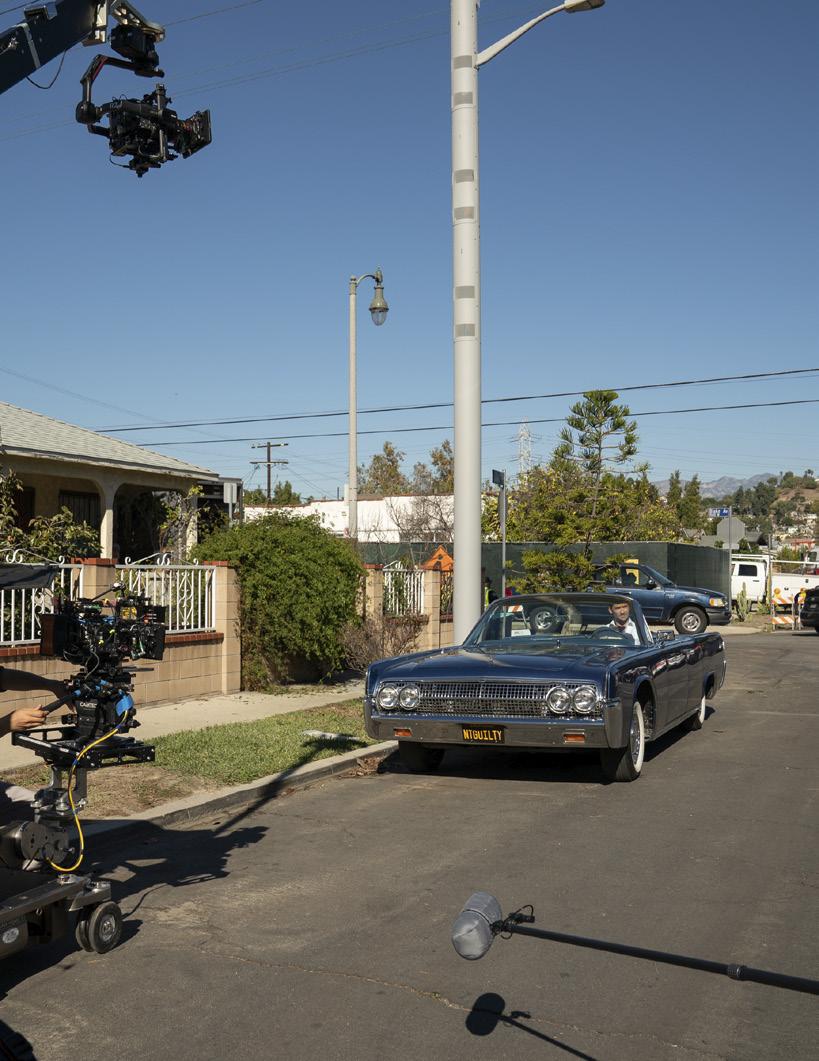
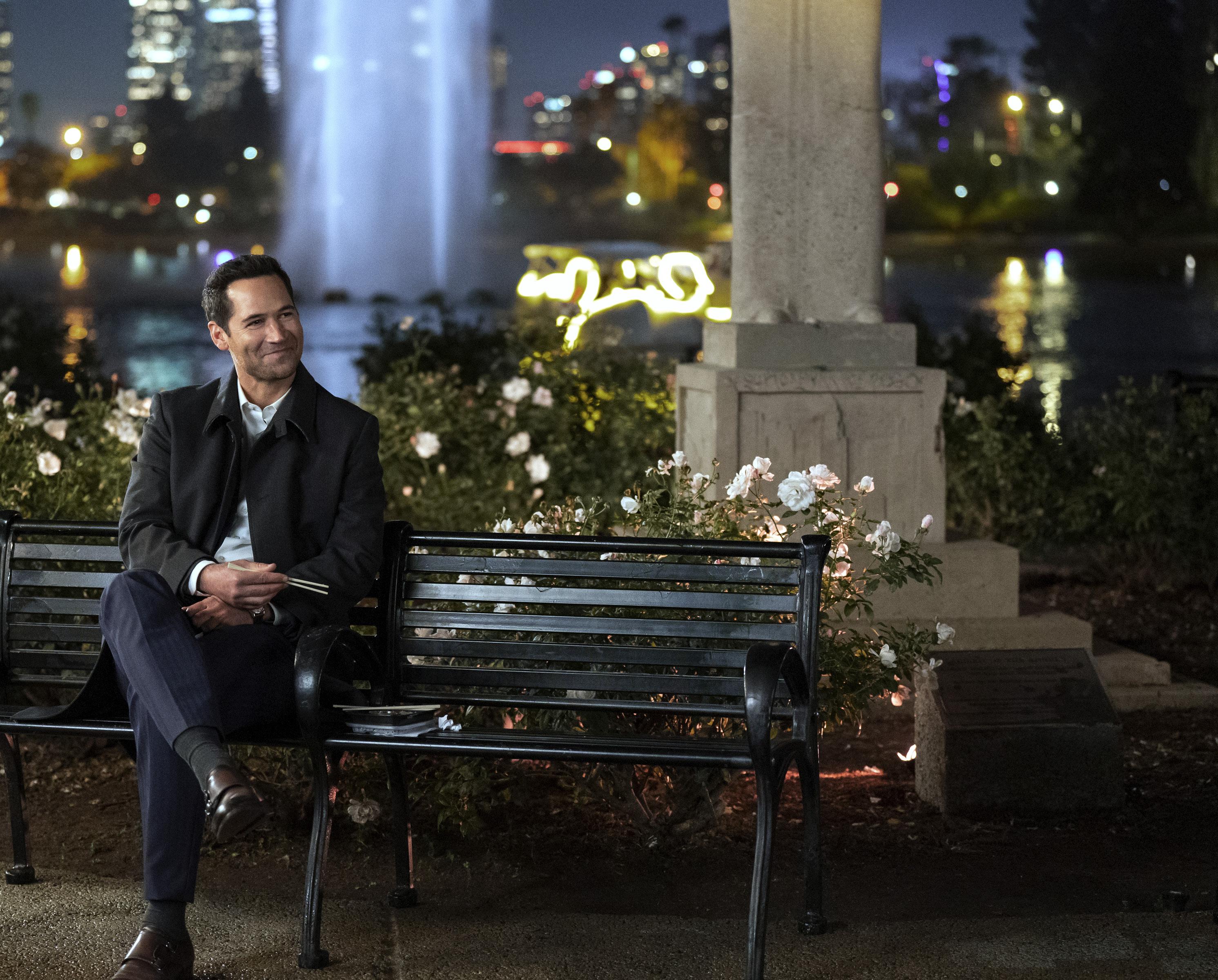
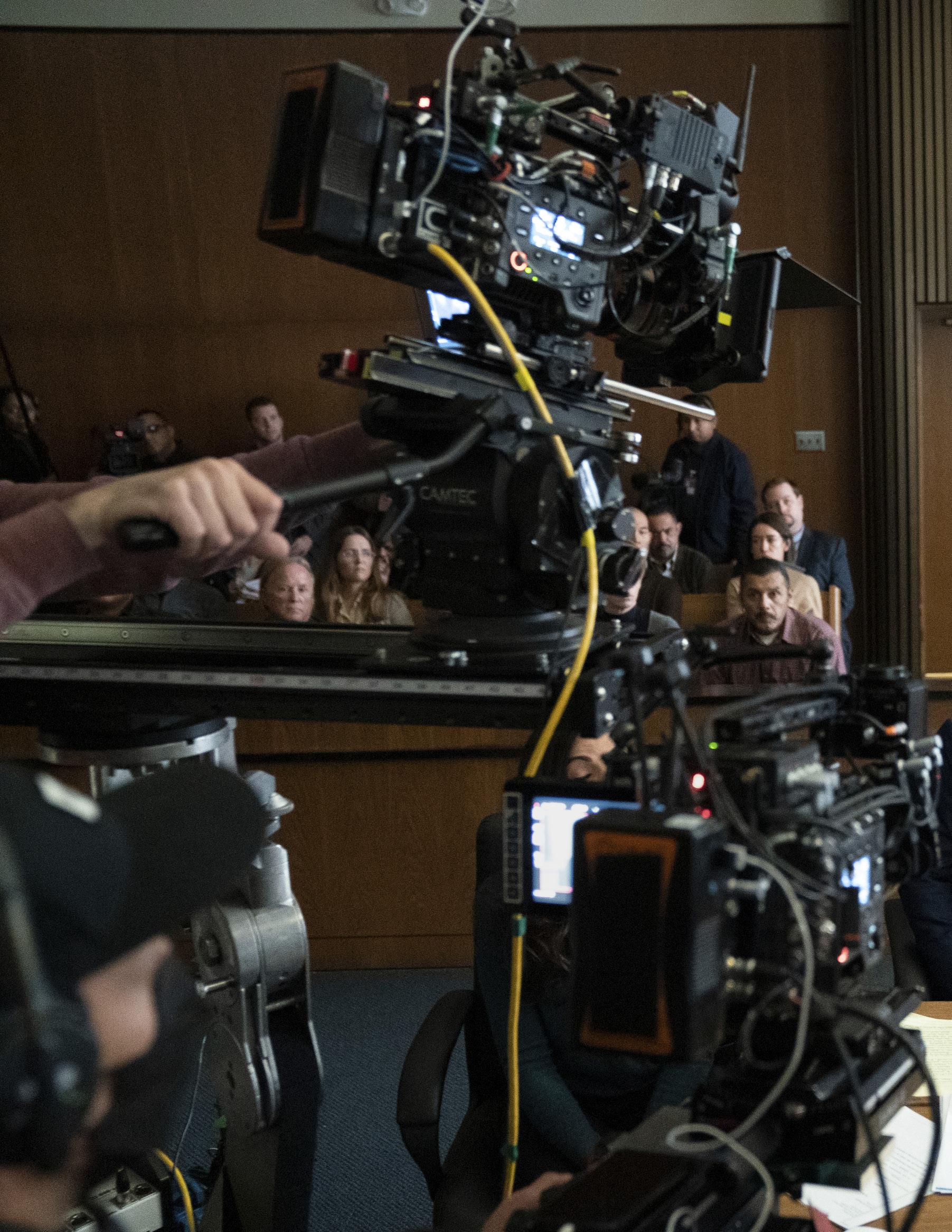
FOR THE COURTROOM SCENES (ABOVE/PGS. 42/43) CO-SERIES DIRECTOR OF PHOTOGRAPHY ABRAHAM MARTINEZ WANTED THE LIGHT TO FEEL COOL AND INTRUSIVE. “[GAFFER] ERIC SAGOT AND I MAPPED OUT THE EPISODES TO HAVE A DIRECTION OF TONE THAT WE WANTED,” HE EXPLAINS. “WE WANTED THE SUN FROM THE COURTROOM WINDOWS TO PUSH DEEPER IN AS THE CASE WENT FURTHER INTO THE SEASON.”
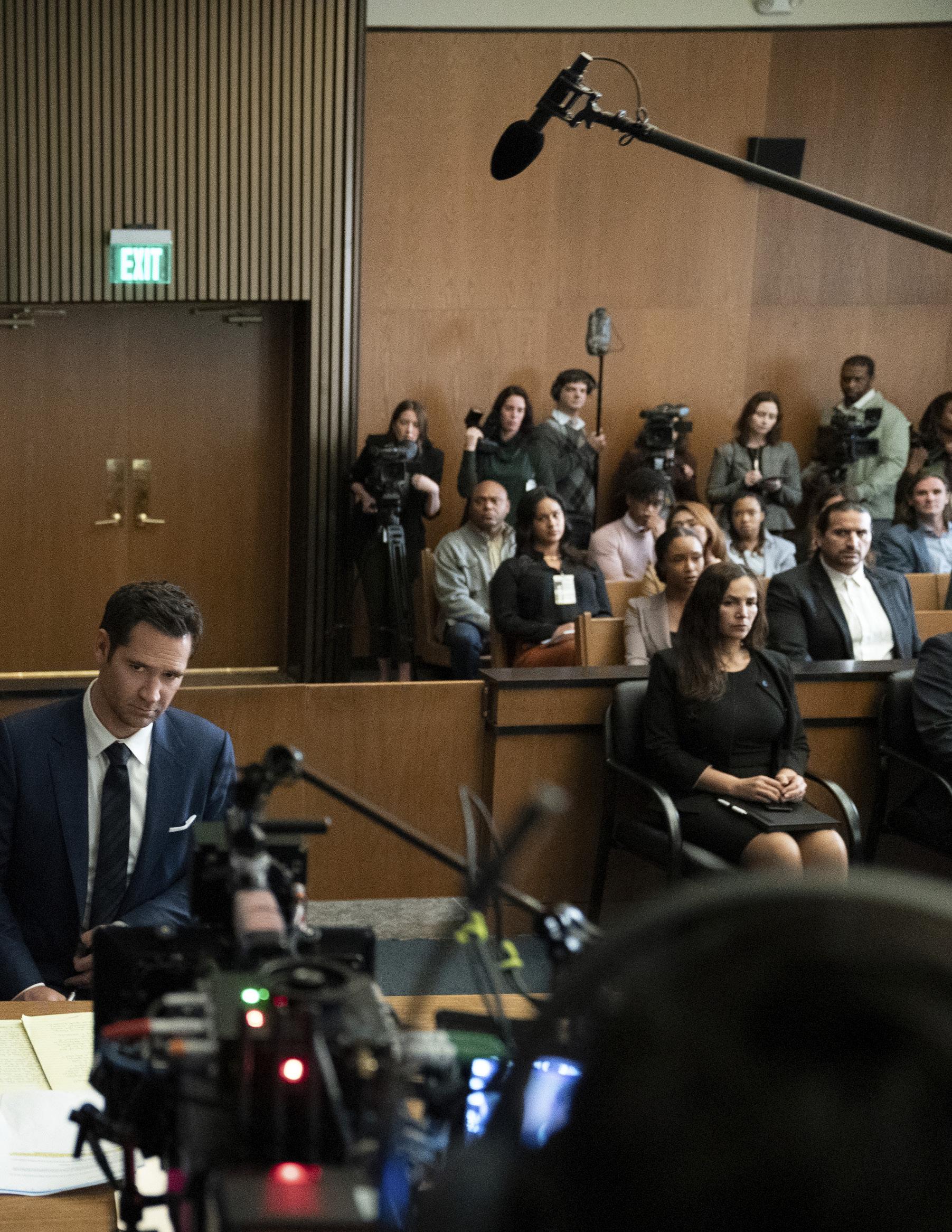

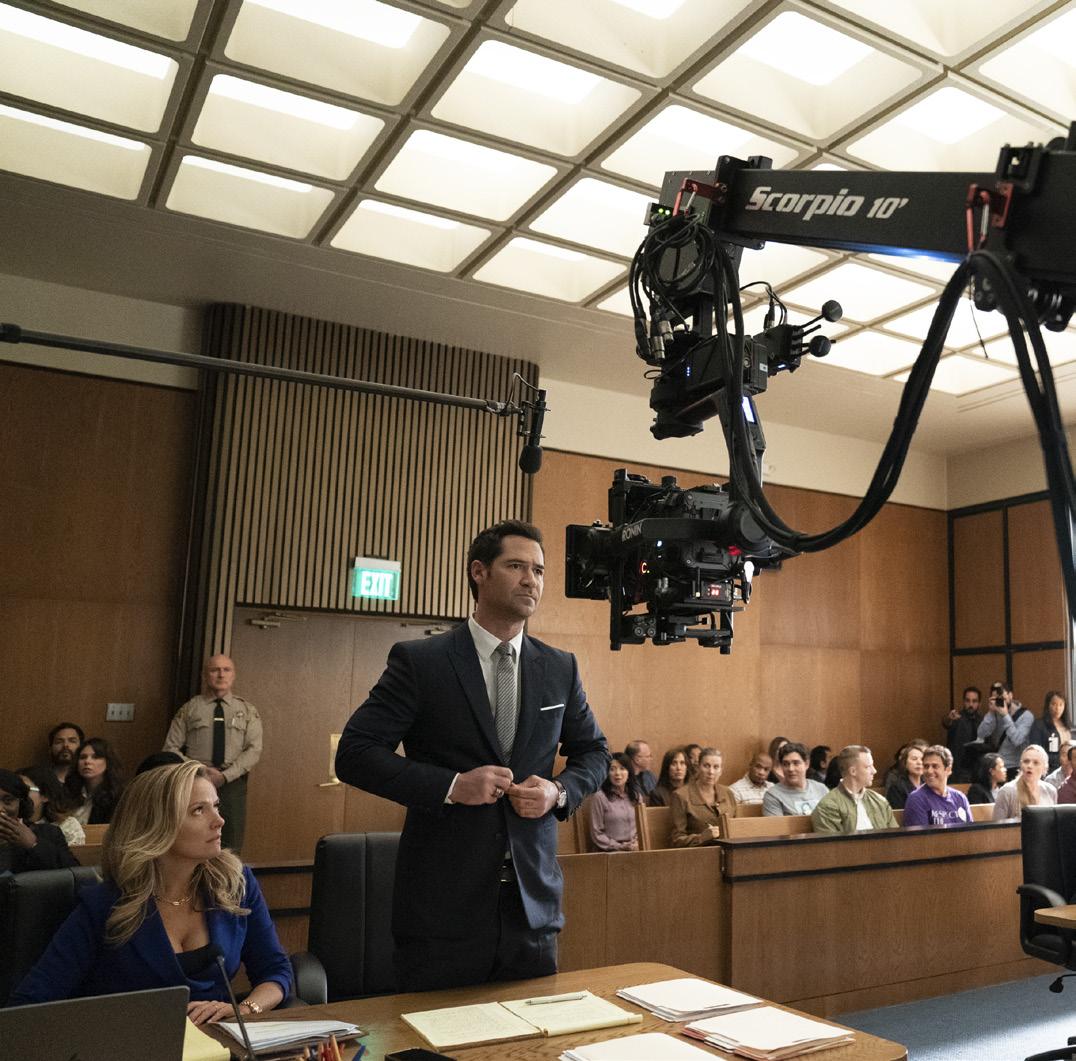

things got complicated. “During prep, we talked to Ted about this beat and realized that it was going to be so much bigger than anyone on the creative team imagined,” Millán recounts. “We had to close down a street on a Saturday and create our own traffic jam and shoot the scene practically with the U-Crane and on the virtual stage. The shot was 50 seconds in the final cut, but don’t even ask how long it took!”
Second Unit and on-the-fly shot s also opened things up for Season 2. Key to those were 2nd Unit DP David Sammons and Operator Brett Juskalian. As Sammons recalls: “Abe and I talked about a driving sequence that became a montage for episode one and blended real driving work with virtual, plates, and VFX. Abe connected me with Second Unit Director Alonso Alvarez-Barreda and Key Grip Chris Garlington. Alonso had a series of shots – Mickey in his ‘bubble’ looking out the window of the Lincoln and other shots connecting him to the outside world. We shot in the hills of Burbank, the 101 freeway from Hollywood heading south, and the streets of Downtown L.A.
“To maximize the time, we had the U-Crane rolling on as many plates and VFX shots on the resets as possible,” Sammons continues. “Shooting on an open freeway was intense, and our stunt team and precision drivers had extensive discussions over safety and how to best use our vehicles to create a safe buffer for us to move the U-Crane arm as needed. One shot involved the use of three lanes of traffic starting as a push-in on Mickey looking out the passenger side window and revealing the city as the car drives away from camera towards downtown L.A.”
Operator Brett Juskalian (who covered Millán when the DP was scouting, while Sammons covered Martinez when he was similarly occupied) says he loved the time he broke away from the studio for 2nd Unit and splinter work. “One of our larger splinter days, we headed to Mulholland Drive and filmed drive-bys while the drone unit followed the Lincoln through the mountains,” he explains. “Filming the vintage Lincoln practically was fantastic. It has such beautiful lines and large flat panels, which were great for finding reflections to visually tie the car into the locations.
“For a scene later in the second half of the series,” Juskalian continues, “Abe asked me to find a B-shot of the exterior of a hotel, while A-Camera Operator Dennis Noyes on Steadicam would concurrently pull Mickey from the hotel entrance across four lanes of traffic to a car stunt right next to the Lincoln. I set up a long lateral dolly along the fender line of the car and, moving right to the left, used the bumper, trunk, and hood reflections to hide Dennis as he crossed the street, and we converged on Mickey as he’s nearly run down by an unknown. It was a well-coordinated effort set in real-world Downtown L.A.”
Courtrooms play a big part in the fabric of The Lincoln Lawyer . Millán recalls how the main courtroom set had two 20Ks on motor chains above the windows on opposite sides to mimic sunlight. “We wanted to have sunlight fill the room as much as possible,” he notes. “Inside the courtroom, above each panel, we had SkyPanels S60 pushing through Magic Cloth. We had full lighting control, and I could quickly create mood and contrast.”
Martinez says that “coming into the backend of the season, and following Pedro, I knew the script would be heavy-handed with courtroom scenes. When it came to the moments when Mickey was outside of the courthouse, I found it important to highlight the two observable aspects of Los Angeles. First, there is L.A. during the day, a thriving and bustling place with lots of warmth and sunlight, which gives Mickey the feeling that he is moving along with his case. Then there’s nighttime, when he goes through periods of self-doubt, musing in a more mysterious reality. I wanted to depict nighttime Los Angeles as an edgy and dramatic environment that dwarfs Mickey as a maverick, who is chopping away at a case.
“The VENICE 2’s low-light capabilities, range of shadow detail, and clean blacks,” Martinez continues, “helped us achieve the subjective L.A. we desired. When it came to lighting, the city already had some interesting elements, like fog and sodium vapor streetlights. The fog at nighttime was relatively unpredictable and added a nice sense of atmosphere. We then had a lot of fun augmenting the natural light with our equipment to produce the look you see in the final shots.”
For the courthouse and courtroom, Martinez wanted the light to feel cool and intrusive. “Eric Sagot and I mapped out the
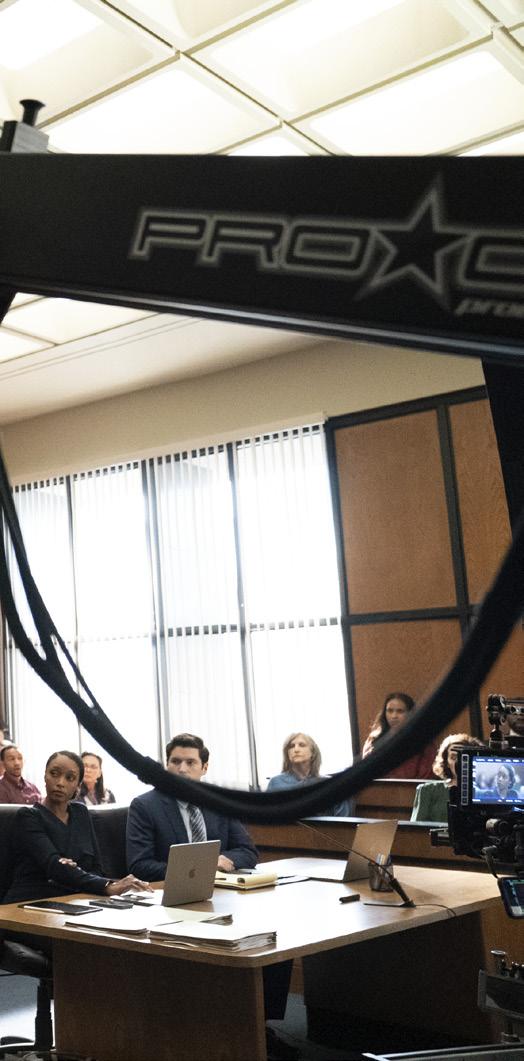

episodes to have a direction of tone that we wanted,” he explains. “We wanted the sun from the courtroom windows to push deeper in as the case went further into the season. Eric did great digging in the space with our truss lighting, Lekos, and AX3.5s. Leading to the verdict, we wanted a gradual feeling of warmth as Mickey wins. Eventually, the warmth we see that gels the exterior and interior of the courtroom provides a full circle of victory for Mickey, or so we think.”
Martinez says planning the multiepisode courtroom scenes was intense. He 3D-scanned the empty courtroom and had a midday look at the lighting from the windows. “This allowed me to virtually go anywhere in the courtroom in the palm of my hand. Next, I like to apply a street photographer’s mindset for the angles.”
The DP admits that having three cameras for the courtroom scenes was challenging. “Lighting for three cameras is not easy,” he continues. “We were able to find many sweet spots that allowed our camera operators to have freedom within their zones while block-shooting all the courtroom scenes. Every day I made a dry-erase board with a courtroom diagram for the team. This allowed us to get upwards of 89 setups in a day. We had a great third camera team operated by Dave Sammons or Matt Valentine.”
To define these shots, Martinez had the 10-foot Scorpio and kitted-out Ronin 2 gimbal. B-Camera was on decking, track, sliders, and dance floor as needed. C-Camera had the most range with zooms and pacing, often shooting tight. The idea was to give a sense of urgency with the camera movement, a feeling of claustrophobia. Longer focal lengths upped the tension of the courtroom scenes; wider lenses for when Mickey
was gaining momentum on his case. Martinez says they were also “mindful and purposeful with our camera lensing and pacing during the courtroom scene transitions to allow the audience time to speculate on the judgement of the case.”
As A-Camera Operator Noyes recalls: “One of my favorite courtroom moments is when we had to liven things up a bit and considered doing a whip pan. In rehearsals, I never hit the same place and was afraid of how to do it. I talked to ‘Big Show’ Joe Chueng, and we developed this way with whip panning on the Ronin 2 that would get us to the same position – no matter the lens size – and continue operating with the wheels before and after the shot.”
A favorite of several crew members is an homage to The Godfather when Dennis “Cisco” Wojciechowski (Angus Sampson) confronts a teacher who has been nasty to Lorna Crane (Becky Newton). “Late in episode 3, Director Kate Woods envisioned Cisco’s visit to Lorna’s former dean as an homage to the assassination scene of Don Fanucci from Godfather I I,” describes Juskalian. “It was a fun challenge because of the thematic differences between our scene and the original. In the film, Vito is taking a dangerous and bold step in his home neighborhood, so the viewer is kept in the moment with him.
“The point of our scene was revealing Cisco as the intimidating force that he is, so we built an initially more voyeuristic feel by staying back and creeping in with the dean as he approaches his dark porch. Then hopping back to reveal Cisco’s shoulder as the light flickers, we get ahead of the dean briefly before Cisco calmly and coldly emerges from the opposite end of the porch. Second Unit Gaffer Eddie Salerno and Dimmer Board Operator Walter Lin ended up rigging multiple lamps to achieve the flicker effect. Oddly, the scene in The Godfather used more of a pulsing, variac
dimming effect rather than a flicker. In our version, we could have a faster, immediate reveal of Cisco’s menacing silhouette instead of the tension-building intercutting and heartbeat-like throb of light in the original.”
The Road Saints Bar reveals more of Cisco’s life. In Episode 5, the police raid the bar (shot in Santa Clarita). “We had to shoot the interior of the bar day for night, action scenes, stunts, moving vehicles, highway closure and exterior night work and a dusk-by-dawn scene,” says Millán. “One of the tricks to make our day was to choose locations close to each other. The grip team tented the bar location where we shot during the day, and I worked with the art department to provide practicals to light the scene for me to move fast.
“We shot the dawn scene dusk-fordawn,” Millán continues. “Our first shot was the last beat of the scene when the sun was barely touching the edge of the mountains. After that, we had to move insanely fast to shoot the rest of the scene at blue hour. Because of the sensitivity of the VENICE, we had 30 minutes after the sun had set to keep shooting. We thought we were going to do one or two takes, but once we got those, I told the director to keep going and do more takes. I was so impressed with the VENICE sensor. It gave us much more time to keep shooting before we went into the full night.”
In true noir fashion, Season 2 of The Lincoln Lawyer ended with the team of union filmmakers banding together once more to shoot a teaser. “It leads to more mystery echoing through the dark side of Los Angeles,” concludes Martinez. “Mickey wins the case, loses the girl, and is once again confined to his most familiar place, his convertible Lincoln. But the city never sleeps, and the dark shadows come back to haunt Mickey as he makes a U-turn in front of Disney Concert Hall to lead us to his next case.”

MILLÁN EXPLAINS THAT, “SEASON ONE WAS FOCUSED ON THE WESTSIDE OF L.A., MALIBU, AND SANTA MONICA AND THE TECH WORLD. FOR SEASON TWO, WE WANTED TO EXPLORE THE EASTSIDE AND THE GENTRIFICATION IN THOSE NEIGHBORHOODS. THAT MEANT DELVING MORE INTO AN EARTH-COLOR PALETTE AND FINDING THE RIGHT SPOTS TO PLACE THE CAMERA TO FEATURE THOSE GREAT LOCATIONS.”
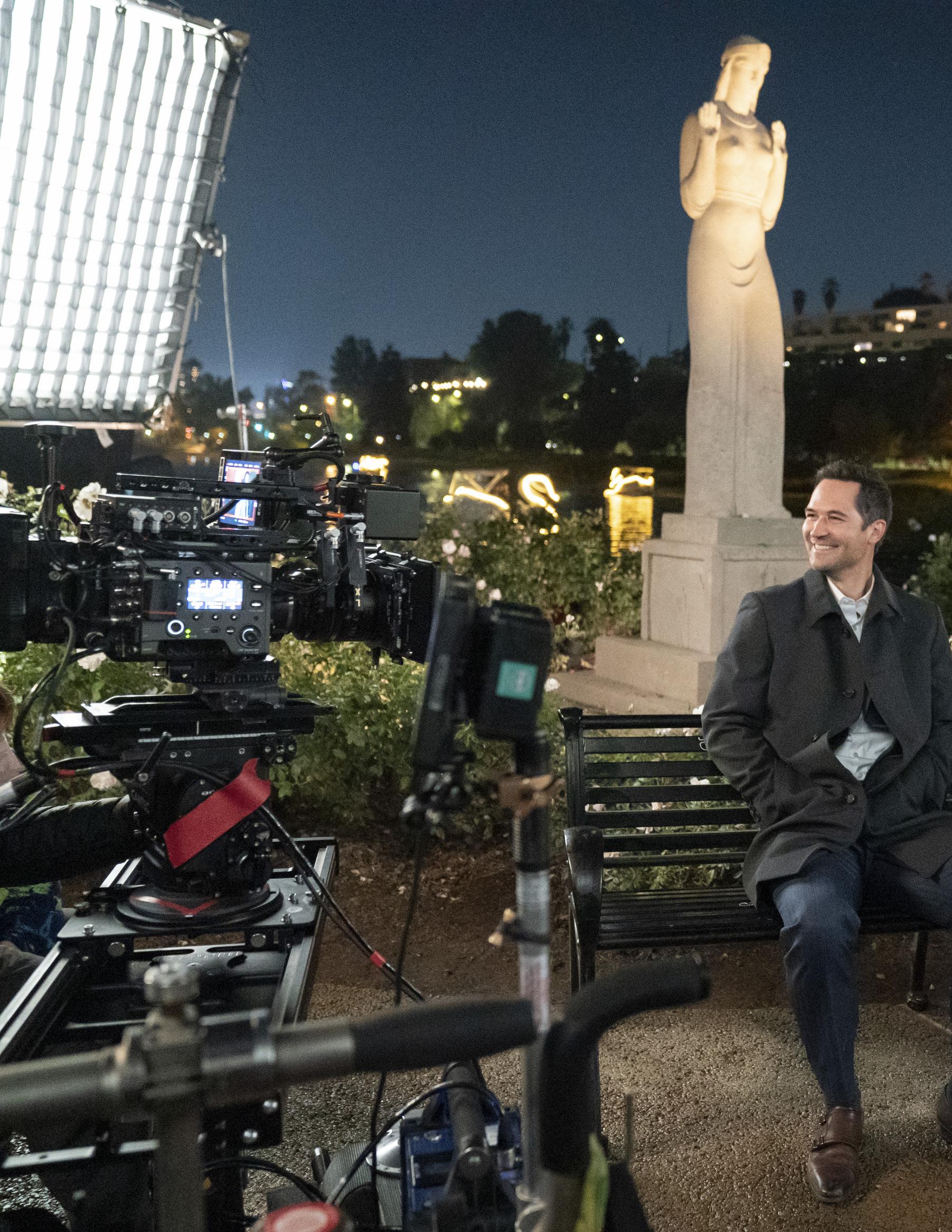
SEASON 2
Directors of Photography
Pedro Gomez Millan
Abe Martinez
A-Camera Operator
Dennis Noyes
A-Camera 1st AC
Joe Cheung
A-Camera 2nd AC
Brendan Devanie
B-Camera Operator
Brett Juskalian
B-Camera 1st AC
Penny Sprague
B-Camera 2nd AC
Ben Perry
DIT
Francesco Sauta
Loader
Raul Perez
Utility
Elana Cooper
Andrew Vera
Still Photographer
Lara Solanki
2nd UNIT
Directors of Photography
David Sammons
Brett Juskalian
C-Camera Operators
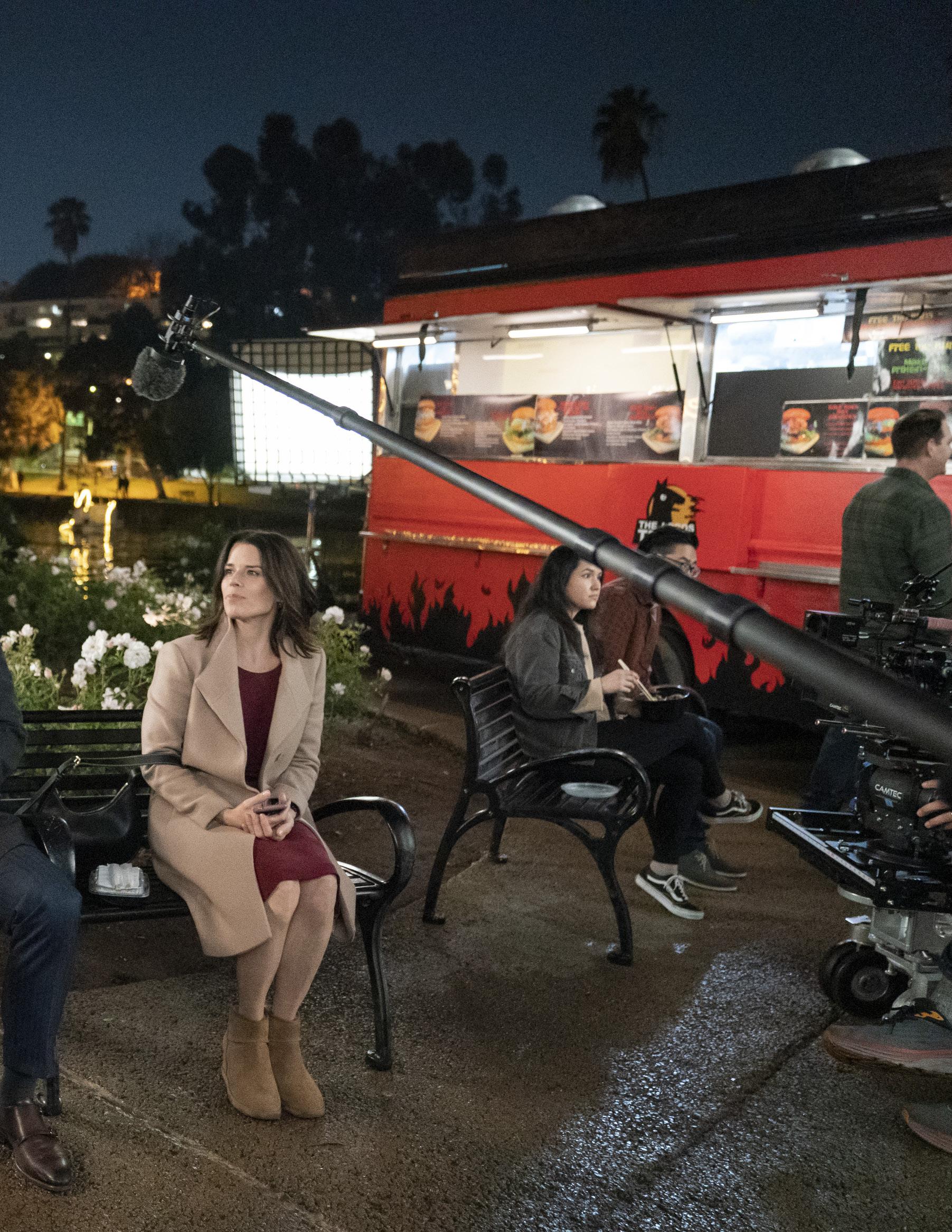
Jonathan Goldfisher
David Sammons
Matt Valentine
Miki Janicin
Eduardo Fierro
C-Camera 1st ACs
Michael Dumin
Noah Ramos
Jeanna Kim
Alex Lim
C-Camera 2nd ACs
Anthony Hwang
Gina Victoria
THE 2023 CLASS OF ECA HONOREES
ACKNOWLEDGES THAT TOUGH TIMES BREED STRENGTH, UNITY AND A PURPOSEFUL VISION TO REACH EVER HIGHER.
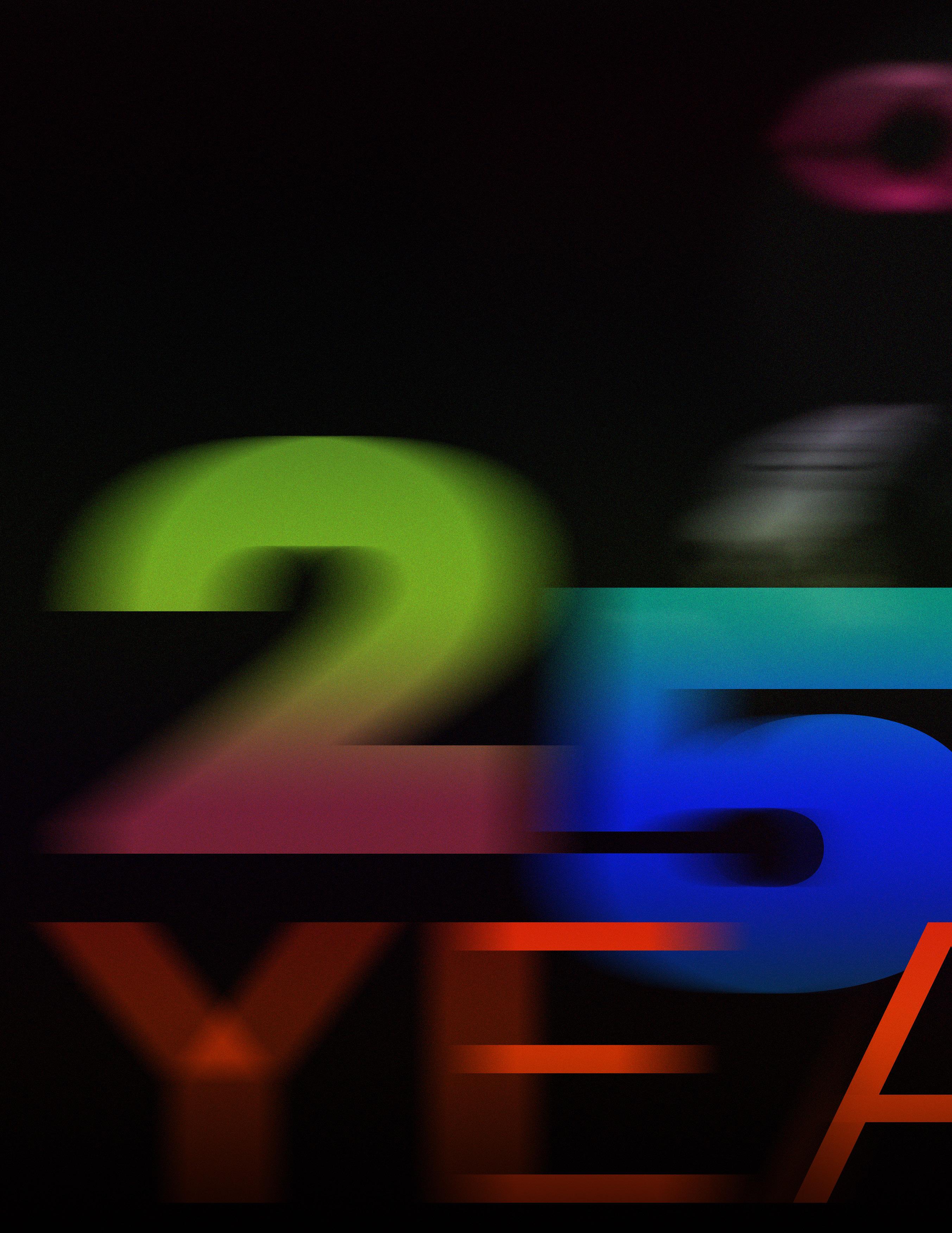 BY MARGOT LESTER
BY MARGOT LESTER
Wondering if there’s something a bit different about this year’s ECA honorees? No doubt about it.
The 2023 class marks the first time the awards have been culled from a group of union filmmakers post-pandemic. (Last year’s 2022 awards went to those 2020 honorees delayed for two years due to COVID.) This year’s ECA’s also serve as the 25th (Silver) anniversary of the event, co-founded by Guild member Rob Kositchek and ICG President Emeritus George Spiro Dibie, ASC. Currently co-chaired by longtime ICG Director of Photography Jimmy Matlosz and ICG President Steven Poster, ASC, all the proceeds and sponsorships of the 2023 ECAs will go into ICG’s scholarship fund.
Wondering what’s changed in four years for these rising ICG filmmakers? A whole lot, as all were quick to acknowledge the challenging events that have not only rocked the industry to which they’ve dedicated their lives, but impacted them as craftspeople and artists. More than one of these honorees shot their films in the dark days of the pandemic, while others tackled issues of race, gender identity, and crime that have been dominating headlines. Whether that’s a young trans woman opting to audition for the female lead in the school play or a 12-year-old Asian-American boy whose notions of becoming a “hero” mean becoming more white, these are all stories told by “character-first” honorees. To a one, they view their ECA peer recognition as a validation of their career choices and of the union that supports them.
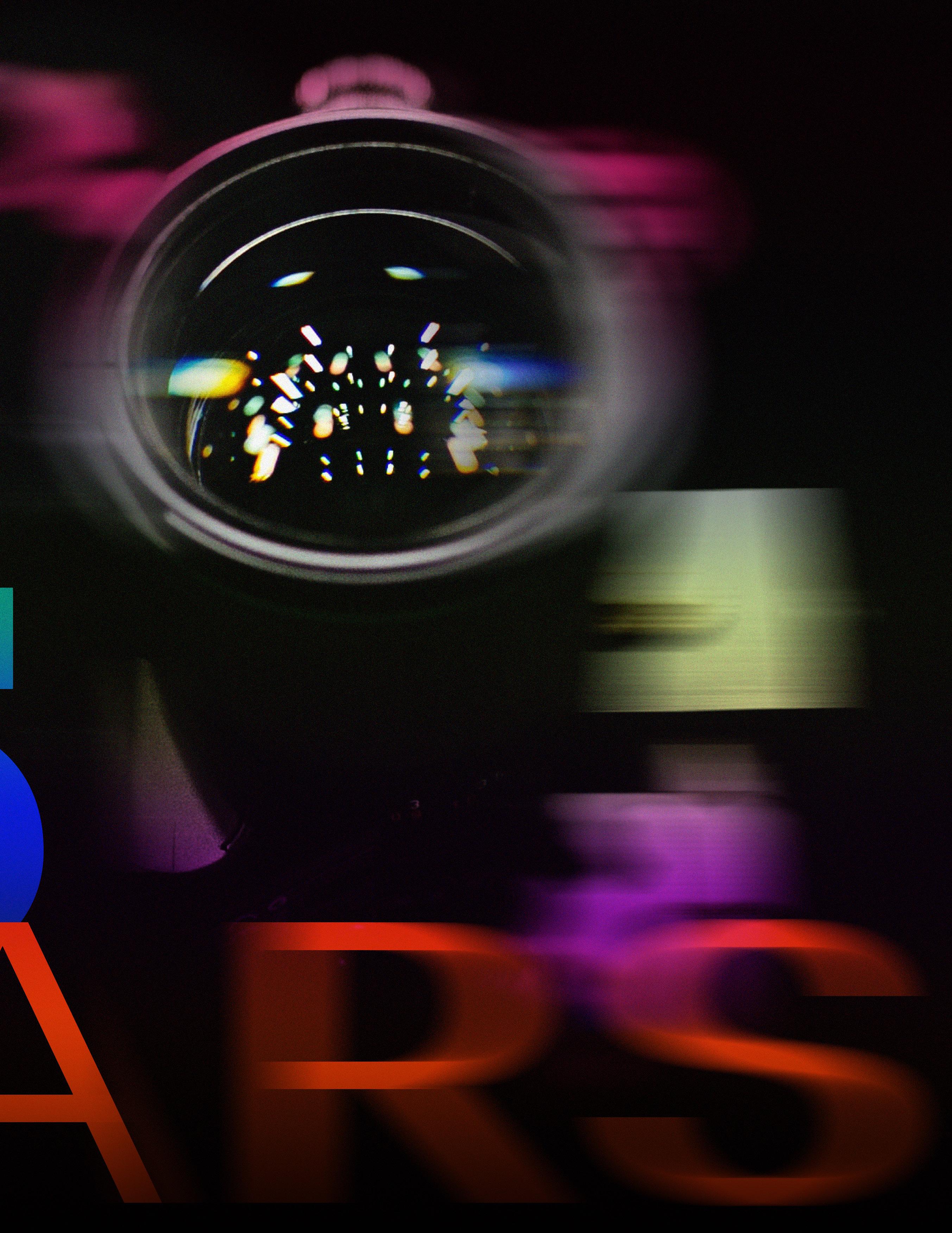
CLASSIFICATION: CAMERA OPERATOR/WESTERN REGION
YEARS IN GUILD: 2
HOME BASE: LOS ANGELES
FILM: FLICKERING SOULS SET ALIGHT
GEAR: ARRI ALEXA MINI, COOKE ANAMORPHIC/I LENSES
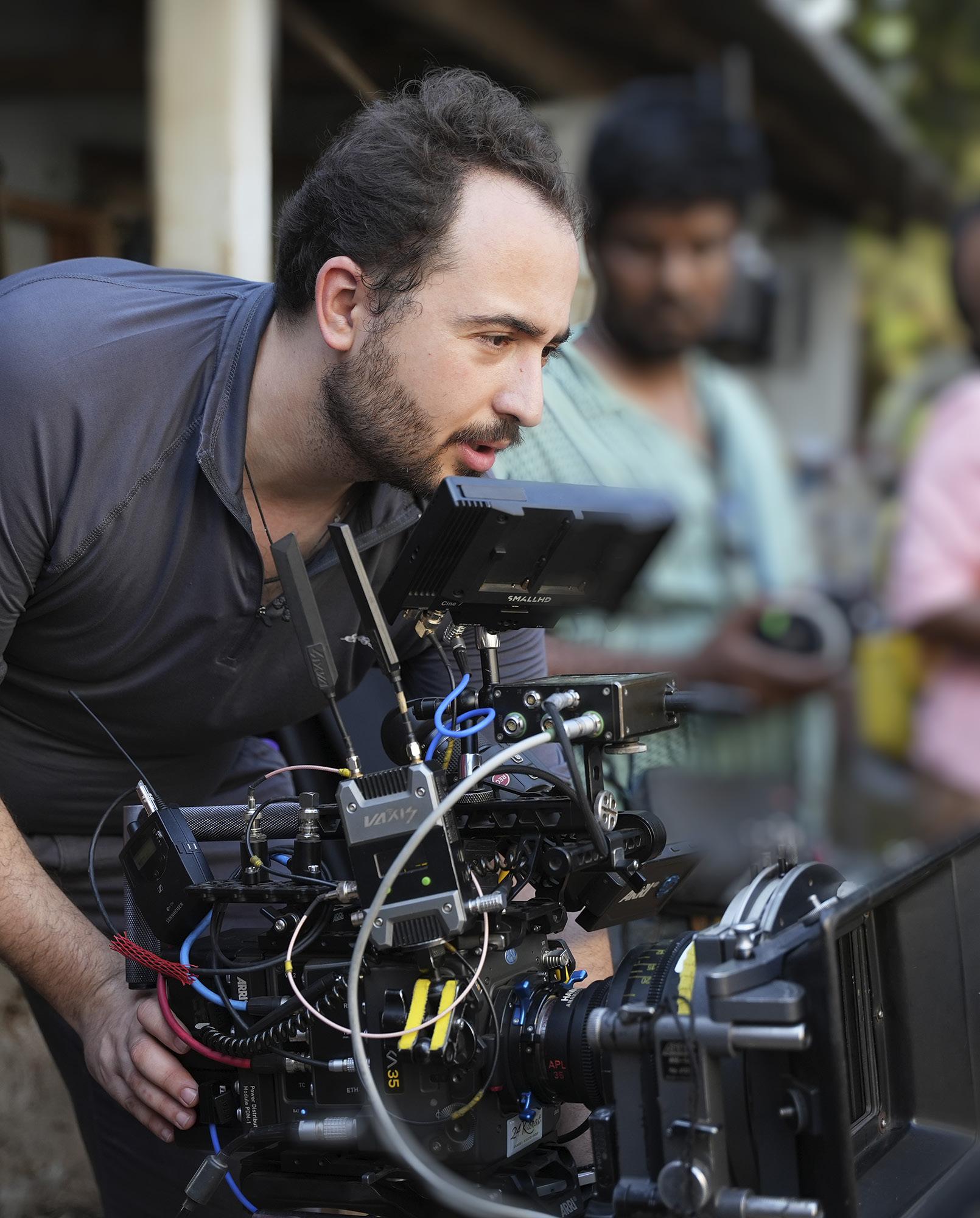
“This accomplishment signifies a milestone in my career, offering exposure that can lead to new opportunities and advancements in my creative path. In such challenging times for our industry, it provides the encouragement needed to continue pursuing our passion and focus even harder on turning our visions into visuals.”
Flickering Souls Set Alight takes the audience on a journey of internal transformation, acceptance and unconditional love. Set during the Greek economic crisis, it chronicles the impact of financial stress on Aris, who lives with ALS, and his wife, Persephone.
Antoniadis, who was born in Greece, and Director Iakovos Panagopoulos made key aesthetic choices to convey lives buffeted by financial and health concerns. They shot anamorphic, used an unconventional 1:1 ratio, captured single-take scenes and created supernaturalistic lighting schemes.

“With each scene being a single take, we had to capture nothing less than what the story required,” Antoniadis explains. “Cropping the sides of our frame – even if we were to shoot open-gate – would be far from ideal, especially within the limitations of our tight locations. And that’s when the idea of using the anamorphic format sideways crossed my mind.”
Antoniadis took a full HD 16:9 sensor and placed the anamorphic lenses vertically to create a 1920 × 2160 frame, very close to a perfect square. That way, they could crop the top and bottom while still getting maximum use of the sensor. “At the time there was no camera or monitor function that allowed custom aspect ratios, so we had to create our own workflow from software to hardware,” he recalls.
Shot in three days, the team spent more than a year “trying to figure out if what we were aiming for was even possible,” Antoniadis laughs. “The bond had become so strong, there was no way around it: the film had to become a reality. I will always be grateful to the entire team!”
CLASSIFICATION: FILM LOADER/WESTERN REGION
YEARS IN GUILD: 7
HOME BASE: LOS ANGELES
FILM: NISEI
GEAR: ALEXA MINI, LOMO SUPER SPEEDS, ATOMOS NINJA

“Earning an ECA means the world to me. Being recognized for my work by those whose opinions I truly value has been a great reminder that although times have been tough, we must keep pushing forward and not lose sight of our goals.”
A character piece set in World War II, Nisei showcases an ugly period in America’s past. The film traces the harrowing journey of Japanese-American brothers Minoru and John Miyasaki.

The duo were stripped of citizenship and imprisoned, yet still volunteered for the 442nd Regimental Combat Team, an all-JapaneseAmerican regiment that was the most medaled unit for its size and length of service in U.S. military history. The film explores the ties of father and sons, a con fl icted sense of self, motives and honor.
One of Bodell’s favorite sequences is an exterior (shot in Petaluma) that moves to an interior set. Bodell worried the change would be obvious. “Budgetarily, we had to use tungsten lights to get the levels where I needed them and balance to an exterior that had yet to be shot,” he recalls. “We had something like 36 par cans in two rows bouncing off a giant unbleached muslin for the wash of ambient light mimicking the hot golden hills in the exterior, then two 5Ks and a 10K for hard sunlight through the windows and doorway. The greatest compliments I’ve received were from other cinematographers I greatly respect who assumed this was a practical location.”
The Sudbury, Massachusetts-born Bodell draws inspiration from fine artists outside the cinema world, namely Pablo Picasso and Ansel Adams. “Picasso had such a finely tuned control of your eye and told you an entire story in one painting as he led you around with a path of luminance and tonality,” Bodell describes. “And, up close, Adams’ dodging and burning gave me a much deeper respect for how you can shape an image with nuanced fragments of light and shadow.”
CLASSIFICATION: CAMERA OPERATOR/WESTERN REGION
YEARS IN GUILD: 12
HOME BASE: LOS ANGELES
FILM: FOR THOSE WHO DON’T KNOW HOW
GEAR: RED KOMODO 6K, ZEISS B SPEEDS, ASTERA TITAN TUBES
“I saw the ECA program as a roadmap toward working as a cinematographer. Becoming an ECA honoree feels like a turning point, allowing me more space to focus on the craft and hopefully help others meet their goals as cinematic artists.”
A relationship ends, a new one begins and in the process, a man discovers a deeper sense of self and a clearer understanding of the dynamic of romantic relationships. That’s the premise of Drew Dawson’s ECA-honored short film, For Those Who Don’t Know How
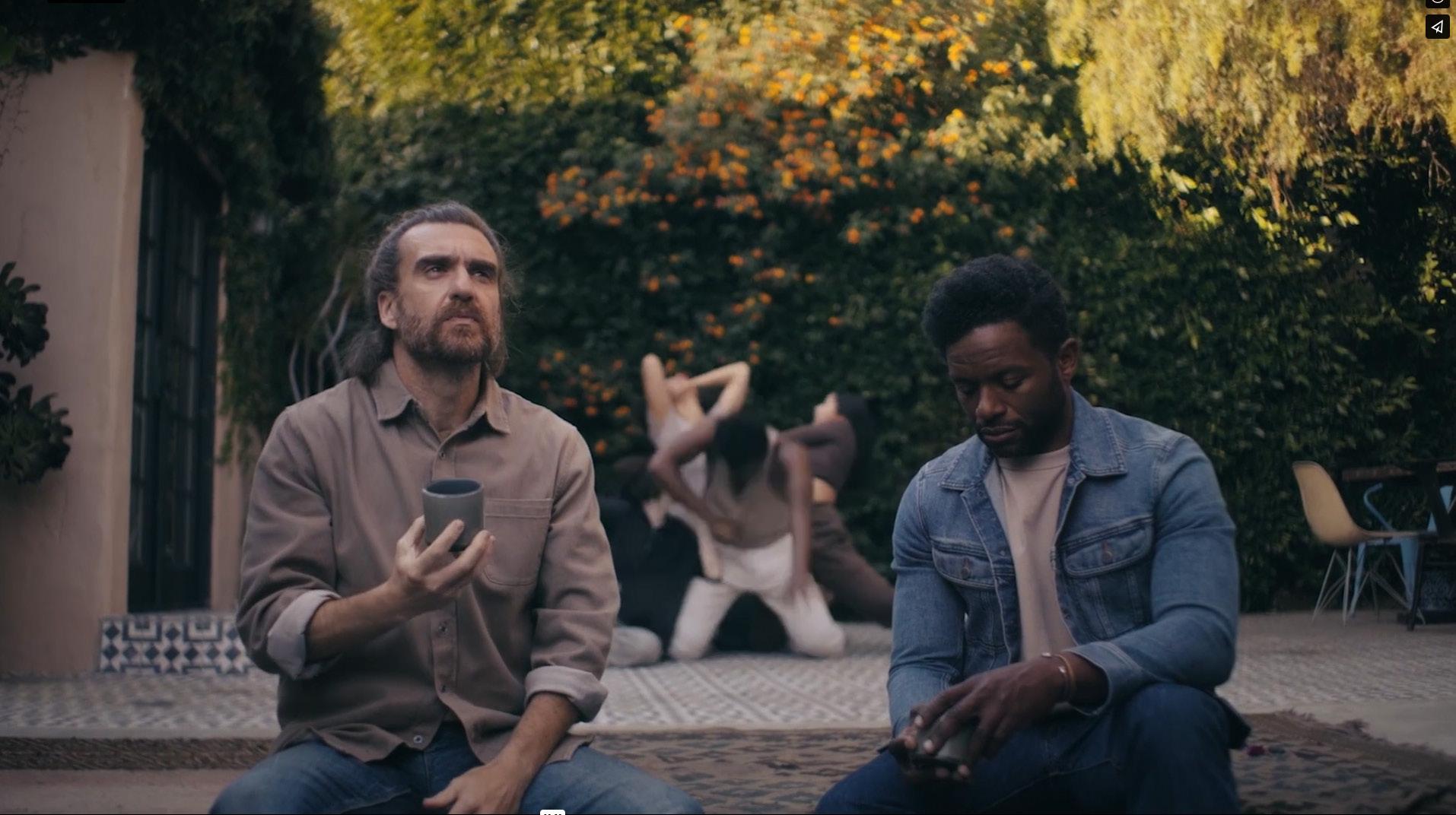
Flashbacks were crucial to charting the ebb and flow of the protagonist’s life, “the changing seasons of things and the inevitable act of entropy that forces us to grow into something new,” explains Dawson, a Detroit native. The ⅛-page scenes that build mood and backstory are scattered throughout the script and created a scheduling challenge for the two-day shoot.
“[Director] Brian Chamberlayne and I would try to simplify these moments by asking, ‘How can we make the most impact in a single shot?’ By focusing on simplicity and creative scheduling, I feel like we met the challenge by thinking critically on the intentionality of each frame.”
A strategic approach to lighting also saved vital minutes. “We had a few Astera Titan tubes outfitted with Lightsock40 modifiers, making the thin light source larger and softer,” Dawson recalls. “[Chief Lighting Technician] Lawrence Le was able to color match any available lighting with his Sekonic color meter, and I never felt like I was sacrificing output for our night scenes. If anything, I was turning the Titan tubes down or shaping them with flags and modifiers. And there was only one shot where we plugged a light into the wall – everything else was run on internal batteries. With this approach, we were able to move incredibly quickly.”

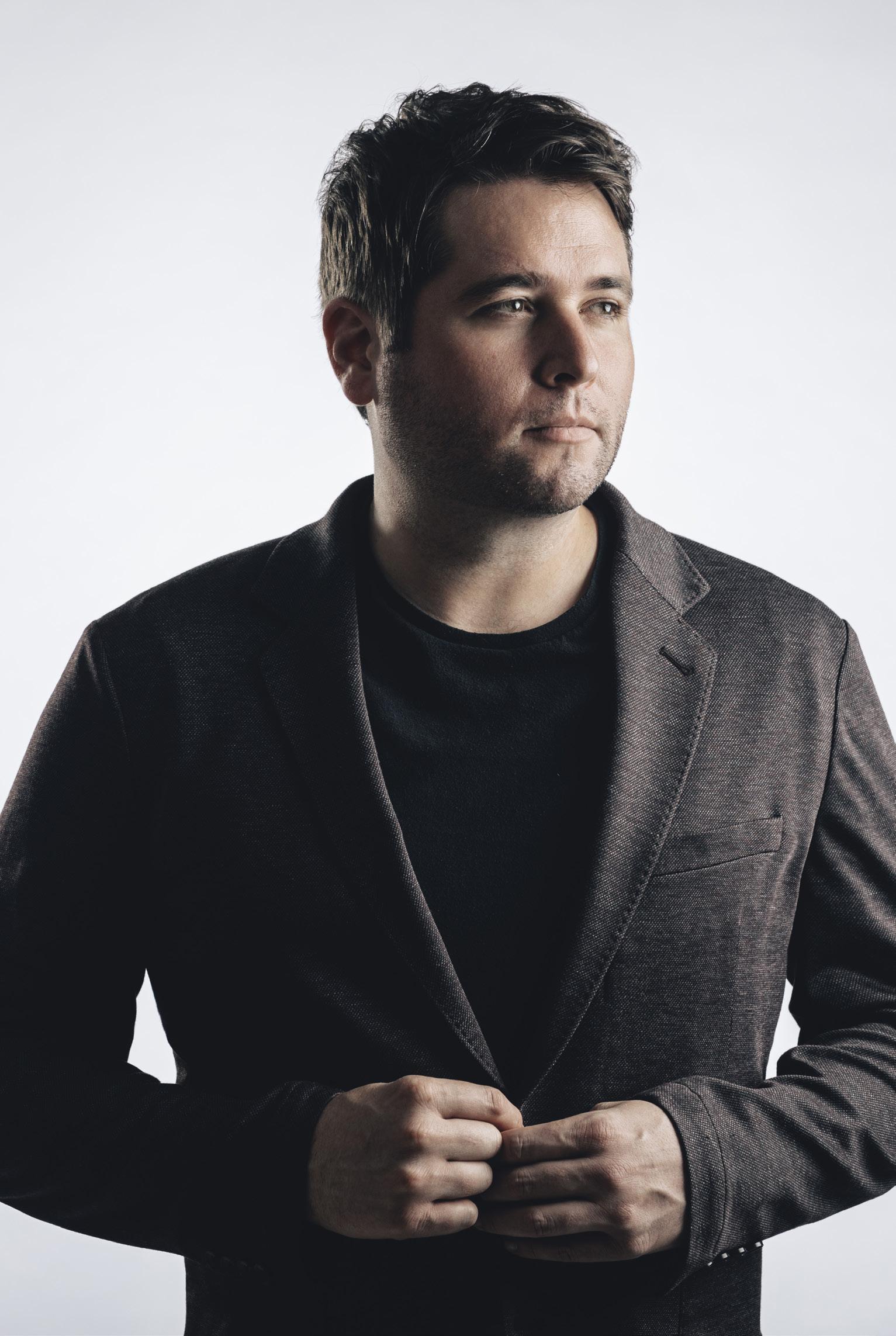
CLASSIFICATION: CAMERA OPERATOR/CENTRAL REGION
YEARS IN GUILD: 5
HOME BASE: ATLANTA
FILM: TORN
GEAR: SONY VENICE 1, KOWA ANAMORPHIC, ATLAS ORION PRIME
“This achievement is a milestone in my career as a cinematographer. I have colleagues who have received this ECA award, and it has helped them progress toward their goals. Achieving this ECA award will help me significantly further mine, too.”
“Torn is a twist on your classic detective serial killer story – True Detective meets The Lovely Bones ,” explains Atlanta-based Operator Edward Guinn. The story centers on two young women shadowing the detective tracking a serial killer in a race to stop the killer before he strikes again.
“I used some creative and bold choices in lighting and camera to allude to the twist,” explains the Shreveport, Louisiana-born Guinn. For most of the three-day shoot, Guinn shot handheld using the EasyRig. “Changing setups quickly and making quick camera and lighting adjustments were vital to its cinematic effect,” he adds.
Guinn modified the naturalistic style for a pivotal sequence in which the girls come upon the killer’s latest victim. “I utilized Storaro cyan for the moonlit scene to give it a feeling that was non-naturalistic,” he adds. “I allowed the actors to illuminate and key light themselves by building a custom-made prop lantern with a small battery-operated light inside.”
The filmmaker did two weeks of preproduction planning and used Lawrence Sher, ASC’s ShotDeck for decks and shot lists. Combining his cinematography expertise with skills learned as a chief lighting technician earlier in his career, Guinn created a detailed lookbook and lighting diagrams. “I’m committed to producing top-quality work and continuously pushing myself to enhance my projects with each new endeavor,” he avows.
In addition to earning an ECA, Torn will be screened at the Cannes Indie Shorts Awards Festival in October.
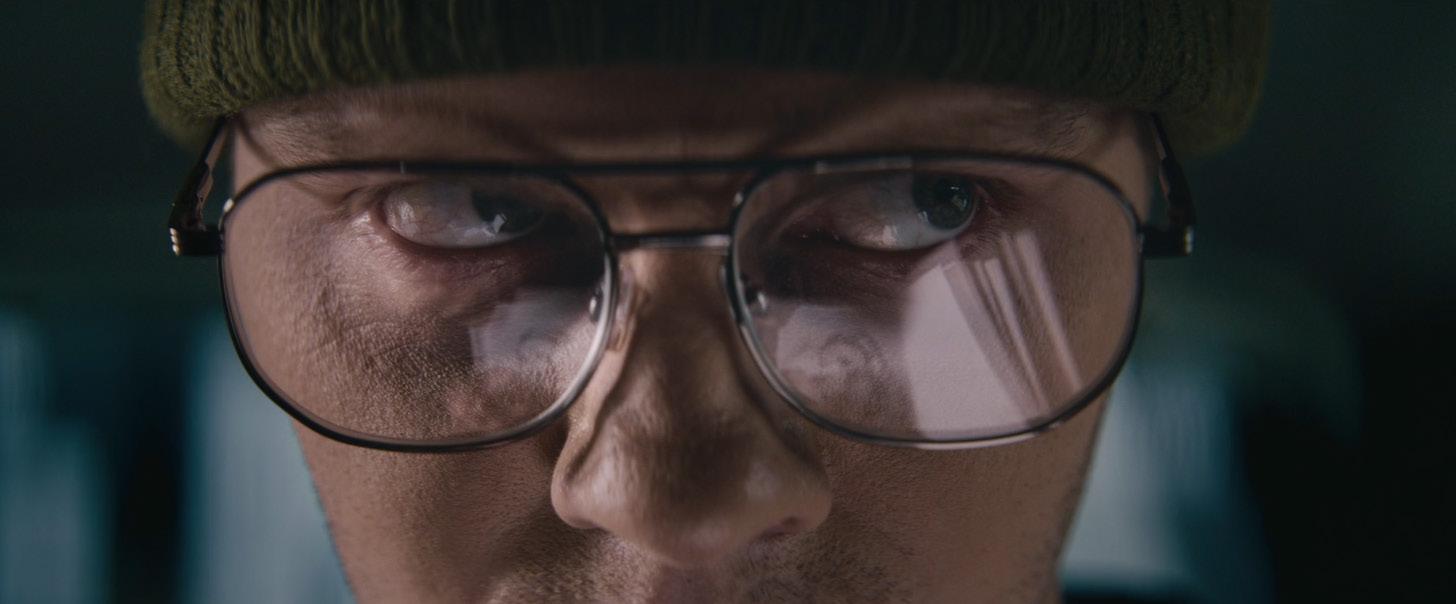
CLASSIFICATION: DIGITAL UTILITY/WESTERN REGIONS
YEARS IN GUILD: 1
HOME BASE: LOS ANGELES
FILM: THE COOP

GEAR: RED EPIC WEAPON, SCHNEIDER-KREUZNACH XENON LENSES
“It’s nice to feel seen at this burgeoning stage of my career, when I often wonder and sometimes doubt myself. This recognition is the reassurance that I’ve put in the work and I’m on the right path. Being an ECA honoree inspires me to rise to the challenge and relinquish any fear of failure.”
The Coop tells the story of a troubled vagabond named Santiago who picks up work as a farmhand on a chicken ranch run by drug-dealing ravers. The protagonist deeply sympathizes with the animals bred for slaughter and absconds behind a camera to break free from his fears and anxieties.
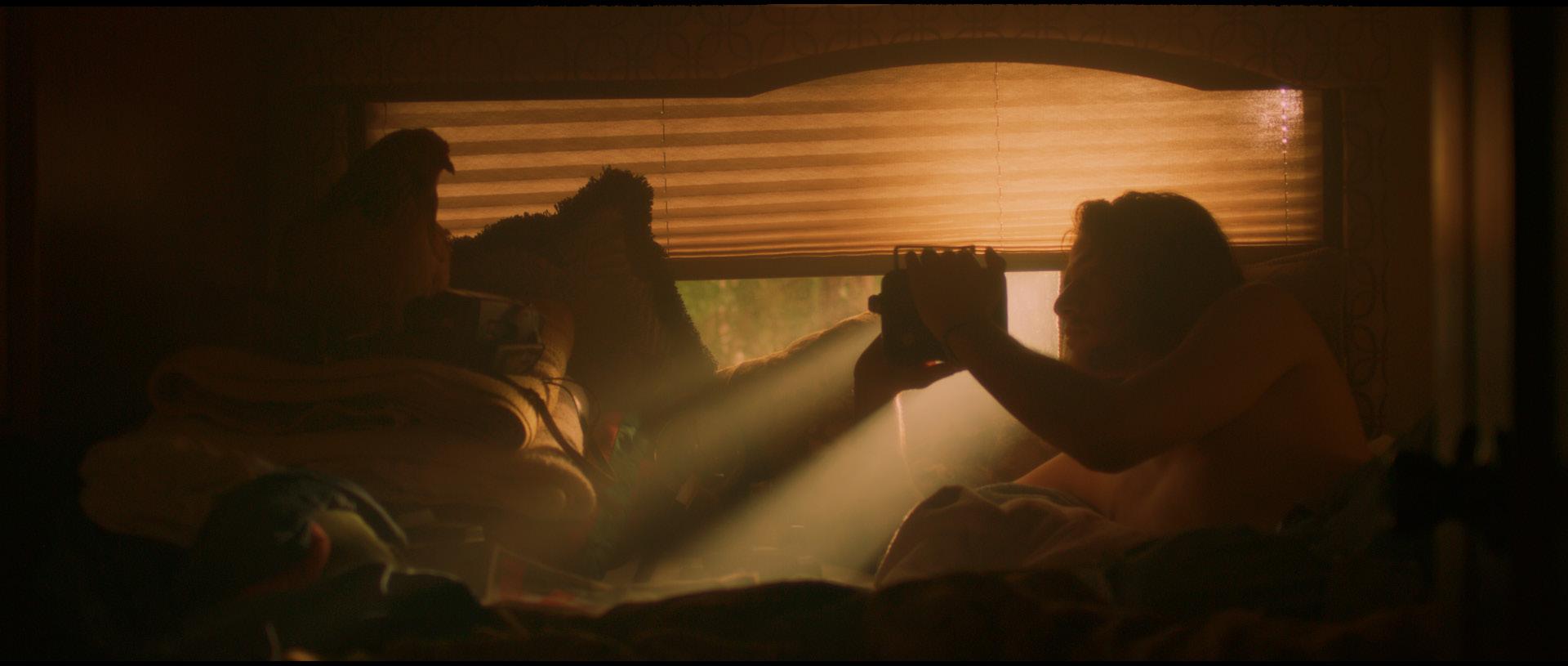
Karner is most proud of capturing a spontaneous rooster fight. “It could not be replicated; it was all by luck and spectacular chance,” the Miami native recalls. “We were walking around to collect random shots the protagonist would have shot when [writer/ director] Rita Al Cunha excitedly pointed out the free-roaming roosters getting fluffed up in the middle of the field. We were almost out of film, too!”
“It’s more about a feeling than anything else,” Karner asserts. “It’s like the melancholy you feel on a Sunday before the week starts or grieving before you’ve even experienced any significant loss.” But it’s not a downer. The film concludes hopefully with a reminder that moments of inexplicable beauty make life meaningful.
“Usually, loss of some sort signifies our purpose in life and, ironically, purpose supplies us with a sense of happiness. At the end of the day, we are all on a quest to find beauty and meaning in the mundane,” says Karner, who studied philosophy at Florida International University. After taking a “philosophy of film” class, he was convinced that photography was “a perfect medium for a philosopher to work with, and I started to see myself as a man with a movie camera.”

CLASSIFICATION: CAMERA OPERATOR/WESTERN REGION
YEARS IN GUILD: 7
HOME BASE: LOS ANGELES
FILM: BLOOD POSITIVE
GEAR: ARRI ALEXA MINI, CINEOVISION HIGH-SPEED ANAMORPHIC LENSES
“Earning an Emerging Cinematographer Award is a huge milestone. It represents a validation of the hard work that not only went into making this film but of all the hard work that it has taken for me to get to this point in my career. This recognition has boosted my confidence and motivates me to continue pushing myself creatively.”
One of the few productions shooting a few months after the onset of the COVID-19 pandemic, in August of 2020, Blood Positive tells a gritty story of two sisters seeking revenge on their estranged father. It’s about the emotional drive for justice and the lengths we go to find the truth.
And, clearly, the storyline suits the dark and moody vision MacAllister had for the film’s visual palette. It’s particularly evident in a sequence in which the sisters drag their father to a parking lot for their mother to confirm his identity. One sister has him on the ground and the other turns on the headlights, silhouetting him.

“We wanted to keep the mom very mysterious until the end when she changes the course of the story for both the girls and the audience,” explains the L.A.-based camera operator. “I lit her very under-exposed, and the viewer only sees a sliver of her face in the moonlight.”
“Blood Positive holds a special place in my heart, not just as a cinematographer but also as an artist,” the Santa Fe, NM, native concludes. “This film truly is a testament to collaboration and perseverance, especially with the challenges of shooting with a very small crew on an indie budget, and navigating production during the early months of the pandemic.”
In addition to earning an ECA, Torn will be screened at the Cannes Indie Shorts Awards Festival in October.

CLASSIFICATION: CAMERA OPERATOR/WESTERN REGION
YEARS IN GUILD: 3
HOME BASE: LOS ANGELES
FILM: JULIET
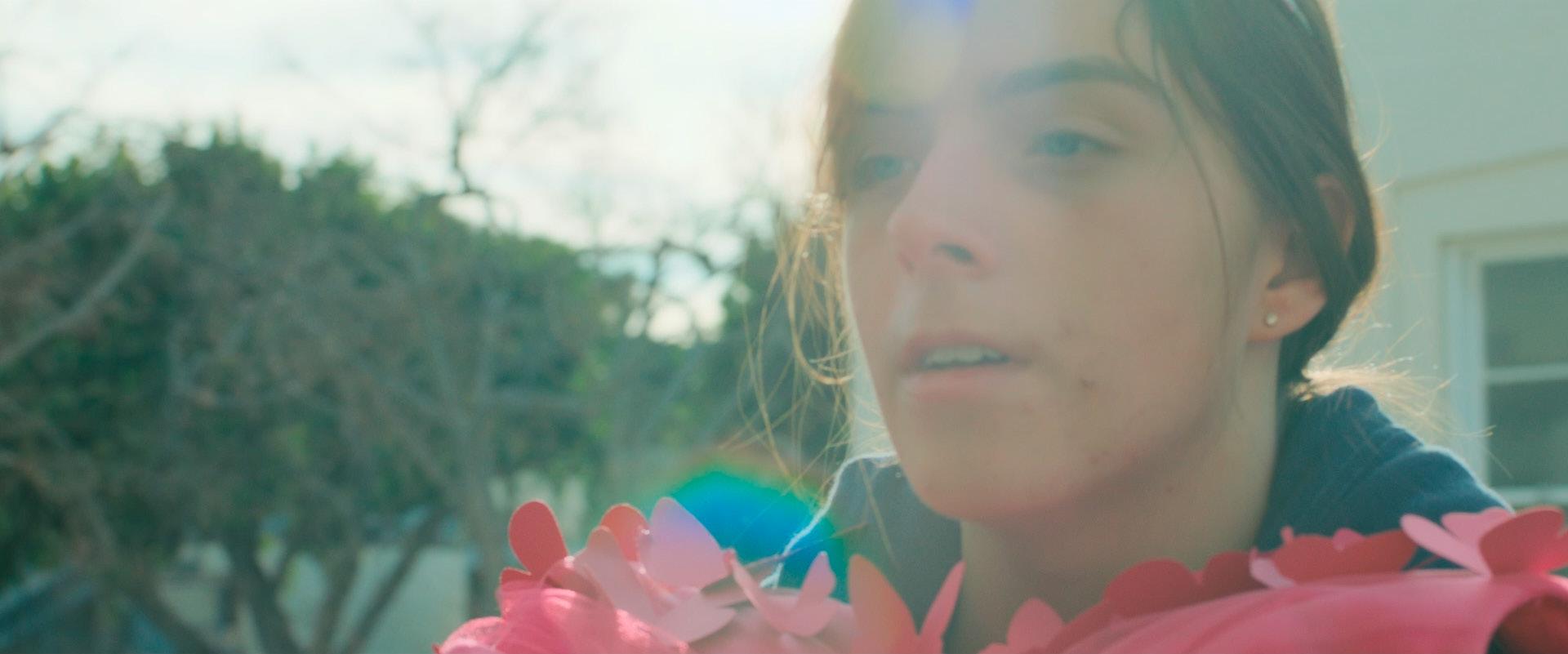
GEAR: ARRI ALEXA, PANAVISION PRIMO LENSES
“I’ve only been a member of Local 600 for a few years, and, for me, being an ICG member offers a chance to support my community within the industry and to actively participate in moving the industry forward. To be acknowledged as a cinematographer, above and beyond my camera operator classification, makes me feel so supported.”
In JULIET we see a young trans woman decide to audition for the female lead in the school play, ultimately testing how far tolerance and progressive attitudes will extend. We watch as the characters come into their own and learn that – at any stage in life – the only approval you truly need is your own.
Consider the first time Serena and James interact one on one.
“Two people separated by physical objects, who see one another reflected and distorted until they finally occupy the same space and share a kiss, each showing a version of themselves emotionally that may or may not be authentic,” recounts Western Region Camera Operator Sarah Anne Pierpont. “The visual design of this scene – shot size, proximity, and eye line – was a delightful counterpart to the actors’ performances and a joy to create. It also leaves a lot of room for the performances to shine. The camera is not showy or spectacular, it’s just the right visual support system for this moment.”
The film, produced as part of Pierpont’s AFI Thesis Program, was subject to the typical indie constraints of budget and time, as well as COVID-19 restrictions. “The wonderful thing about working in the context of the AFI Thesis Program is that it really fostered an obstacle-is-the-way mentality and approach,” notes Pierpont, who grew up in Princeton, NJ. “A shared desire to tell this story the best way possible from the core team was entirely responsible for the film carrying through to the finish line. It felt as though every problem was actually a nudge towards a more efficient or narratively appropriate direction.”
CLASSIFICATION: 1ST AC/EASTERN REGION
YEARS IN GUILD: 11
HOME BASE: NEW YORK CITY
FILM: WHITE NOW PLEASE
GEAR: ARRI ALEXA MINI/MINI LF, COOKE & ANGÉNIEUX LENSES
“It is an incredible honor to earn an ECA and something I dreamed of since joining the union more than ten years ago. It’s especially meaningful to be selected for this project with my long-time friend, Kyle Lau, an award-winning director and WGA writer, and seeing each other work up the ranks through our respective fields. With the helpful recognition from being selected for the ECA, I hope to change my classification to an operator or DP when the opportunity arises.”
White Now Please examines dominant culture through the eyes of Bryan Chen, a 12-year-old Asian-American boy. “He wants to be a hero, so he tries to become the thing he knows all heroes are – white,” explains Eastern Region 1st AC Yusuke Sato. Bryan wrestles with whether to “white-ify” himself or remain the person he is.
“This was one of the most challenging projects, logistically, I have worked on, due to the time constraints of filming with children, with COVID protocols, and with crew members I only met for the first time,” Sato adds. “Most of my work for the past few years has been in documentaries and docuseries, and it has helped me hone my skills working nimbly as a vérité operator and DP, opening my eyes to new ways to tell stories and the importance of creating a positive social impact through media.”
For the L.A.-born Sato and the rest of the mostly Asian-American crew and cast, it was especially meaningful to combine their “creativity and energy to bring this story to life through shared memories of growing up in America,” Sato explains. “There’s a universal feeling that we were able to capture: the feeling that you are not good enough, wishing you were somebody else or that you could change something about yourself. We were able to translate this visually, right from the first scene, using a contrast in camera height, angles and sizes between characters and purposefully keeping Bryan unlit in the darkness while establishing color themes that carry throughout the film.”


The input of Local 600 members is of the utmost importance, and we rely on our membership as the prime (and often the only) source of information in compiling this section. In order for us to continue to provide this service, we ask that Guild members submitting information take note of the following requests:
Please provide up-to-date and complete crew information (including Still Photographers, Publicists, Additional Units, etc.). Please note that the deadline for the Production Credits is on the first of the preceding cover month (excluding weekends & holidays).

Submit your jobs online by visiting: www.icg600.com/MY600/Report-Your-Job
Any questions regarding the Production Credits should be addressed to Teresa Muñoz at teresa@icgmagazine.com
20TH CENTURY FOX
thestudiobh.com | thestudio@bhphoto.com

Exclusive for ICG members: Ask us about our purchasing program for members including our comprehensive set of financial services. Please contact thestudio@bhphoto.com for more details
“AMERICAN HORROR STORIES: HAMPTONS” SEASON 12
DIRECTORS OF PHOTOGRAPHY: TIM NORMAN, ANDREI SCHWARTZ
OPERATORS: AILEEN TAYLOR, GERARD SAVA
ASSISTANTS: BRADEN BELMONTE, JOHN REEVES, CAROLYN WILLS, SARAH SCRIVENER
DIGITAL IMAGING TECH: GUILLERMO TUNON
LOADERS: OFELIA CHAVEZ, VINCE FERRARI
TECHNOCRANE TECH: CRAIG STRIANO
STILL PHOTOGRAPHERS: MICHAEL PARMELEE, ERIC LIEBOWITZ
FLEEING, INC.
“FLEEING”
DIRECTOR OF PHOTOGRAPHY: MARTIM DELUCENA
VIAN
OPERATORS: BEN SPANER, MICHELLE MARRION
ASSISTANTS: VANESSA VIERA, MARTIN PETERSON,
TANEICE MCFADDEN
DIGITAL IMAGING TECH: JUSTIN HARTOUGH
GRIFFIN
“GRIFFIN IN SUMMER”
DIRECTOR OF PHOTOGRAPHY: FELIPE VARA DE REY
ASSISTANTS: SEAN SUTPHIN, ERIC EATON
MILLER HILL, INC.
“THE 4:30 MOVIE”
DIRECTOR OF PHOTOGRAPHY: YARON LEVY

OPERATOR: MATTHEW FLEISCHMANN
ASSISTANTS: RENE CROUT, JOE ROBINSON
DIGITAL IMAGING TECH: KEITH PUTNAM
TWIN PRODUCTIONS, LLC
“LA PUERTA”
DIRECTOR OF PHOTOGRAPHY: HEIXAN ROBLES
ASSISTANTS: NOELIA GONZALEZ CASIANO, LIZZ DIAZ
STEADICAM OPERATOR: CHRISTIAN RAMIREZ COLL
CAMERA UTILITY: THATIANA HERNANDEZ
DRONE PILOT: SU-JENG SANG
DRONE OPERATOR: CARLOS DE LEON ORTIZ
STILL PHOTOGRAPHER: LAURA MAGRUDER
SONY PICTURES TELEVISION
“JEOPARDY!” SEASON 39
DIRECTOR OF PHOTOGRAPHY: JEFF ENGEL
OPERATORS: DIANE L. FARRELL, SOC, MIKE TRIBBLE, JEFF SCHUSTER,
L. DAVID IRETE
JIB ARM OPERATOR: MARC HUNTER
HEAD UTILITY: TINO MARQUEZ
CAMERA UTILITY: RAY THOMPSON
VIDEO CONTROLLER: JEFF MESSENGER
VIDEO UTILITIES: MICHAEL CORWIN, JEFF KLIMUCK
STILL PHOTOGRAPHER: CAROL KAELSON
“WHEEL OF FORTUNE” SEASON 40
DIRECTOR OF PHOTOGRAPHY: JEFF ENGEL
OPERATORS: DIANE L. FARRELL, SOC, L.DAVID IRETE, RAY GONZALES, MIKE TRIBBLE
HEAD UTILITY: TINO MARQUEZ
CAMERA UTILITY: RAY THOMPSON
VIDEO CONTROLLER: JEFF MESSENGER
VIDEO UTILITIES: MICHAEL CORWIN, JEFF KLIMUCK
JIB ARM OPERATOR: STEVE SIMMONS
STILL PHOTOGRAPHER: CAROL KAELSON
CAVIAR “CARMAX”
DIRECTORS OF PHOTOGRAPHY: KIRA KELLY, ASC, CHLOE WEAVER (SOCIALS)
OPERATOR: ROCHELLE BROWN
ASSISTANTS: ETHAN MCDONALD, CHRISTINE HODINH, JASON ALEGRE, KOKO LEE, JOE MCNAIRY (SOCIALS), LEIGH STIEPEL (SOCIALS)
DIGITAL IMAGING TECH: DANNY HERNANDEZ
CENTRAL FILMS NORTH
“HYUNDAI”
DIRECTOR OF PHOTOGRAPHY: FEDERICO CANTINI
OPERATOR: JAMES MARIN
ASSISTANTS: IGNACIO MUSICH, AMANDA MORGAN, JOSEPH CANON, CHRIS MARIUS JONES, ALEX NIETO
DIGITAL IMAGING TECH: PAUL MALETICH
SCORPIO STABILIZED HEAD TECH: JAY SHEVECK
CONDUCTOR PRODUCTIONS, LLC
“FANATICS”
DIRECTOR OF PHOTOGRAPHY: NATHAN SWINGLE
ASSISTANT: JILL TUFTS
DIGITAL IMAGING TECH: NICK PASQUARIELLO
GIFTED YOUTH, LLC
“COINTREAU”
DIRECTOR OF PHOTOGRAPHY: CARL HERSE
ASSISTANTS: JUSTIN WATSON, JOHN RONEY
DIGITAL IMAGING TECH: NINA CHADHA
HEY WONDERFULE
“CRICKET WIRELESS”
DIRECTOR OF PHOTOGRAPHY: GARY LONG
OPERATOR: JOSHUA RAMOS
ASSISTANTS: ALEJANDRO GARCIA, MATT ARREDONDO
STEADICAM OPERATOR: JOSHUA RAMOS
STEADICAM ASSISTANT: ALEJANDRO GARCIA
DIGITAL IMAGING TECH: ERIC ALMOND
MERMAN BRANDED
“WALMART”
OPERATOR: ALLIE SCHULTZ
ASSISTANTS: ERIC UGLAND, WILL HECHT,
JACOB PERRY, RIO NOEL ZUMWALT
DIGITAL IMAGING TECH: SAM PETROV
MJZ
“MCDONALD’S”
DIRECTOR OF PHOTOGRAPHY: LACHLAN MILNE
ASSISTANTS: LIAM SINNOTT, ALEX SCOTT, PAUL TILDEN
DIGITAL IMAGING TECH: MICHAEL ROMANO
STEADICAM OPERATOR: CHRIS CUEVAS
CRANE HEAD TECH: DERRICK ROSE
“U.S. ARMY”
DIRECTOR OF PHOTOGRAPHY: LAURIE CRAWLEY
ASSISTANTS: MATTHEW MEBANE, FRANZISKA, LEWIS, JUSTIN URBAN, JAMES KEITH THOMAS
STEADICAM OPERATOR: JULIAN DELACRUZ
CAMERA UTILITY: NICK COCUZZA
DIGITAL IMAGING TECH: ANDY BADER
PRETTY BIRD PICTURES
“MCDONALD’S MCCHICKEN”
DIRECTOR OF PHOTOGRAPHY: JEANNE VIENNE
ASSISTANTS: MITCH MALPICA, DANIEL SANABRIA, SAM ELLIOT
DIGITAL IMAGING TECH: GEORGE ROBERT MORSE
SIBLING RIVALRY FILMS
“PROJECT COWBOY”
DIRECTOR OF PHOTOGRAPHY: PETER KONCZAL
OPERATOR: YOUSHENG TANG
ASSISTANTS: JON COOPER, SARA BOARDMAN
DIGITAL IMAGING TECH: TYLER ISAACSON
SMUGGLER
“SCOTTS”
DIRECTOR OF PHOTOGRAPHY: TIMOTHY IVES
OPERATORS: JULIAN DELACRUZ, REBECCA ARNDT
ASSISTANTS: COURTNEY BRIDGERS, GLENN KAPLAN, ANTHONY DEFRANCESCO, AMBER MATHES, COREY LICAMELI
DIGITAL IMAGING TECH: JESSICA TA
TOASTY VIDEO
“DAVID TRONE”
OPERATOR: DANIELA MILEYKOVSKY
ASSISTANT: MATTHEW CAULK
UNION CREW, LLC
“SCHWAB CHARITABLE-NEWTOWN”
DIRECTOR OF PHOTOGRAPHY: JOSHUA HESS
OPERATOR: CHONG PAK
ASSISTANTS: BROOKS BIRDSALL, RYAN BALDWIN
VAGRANTS, INC.
“CUMBERLAND FARMS”
DIRECTOR OF PHOTOGRAPHY: PATRICK RUTH
ASSISTANTS: JILL TUFTS, AUDREY STEVENS
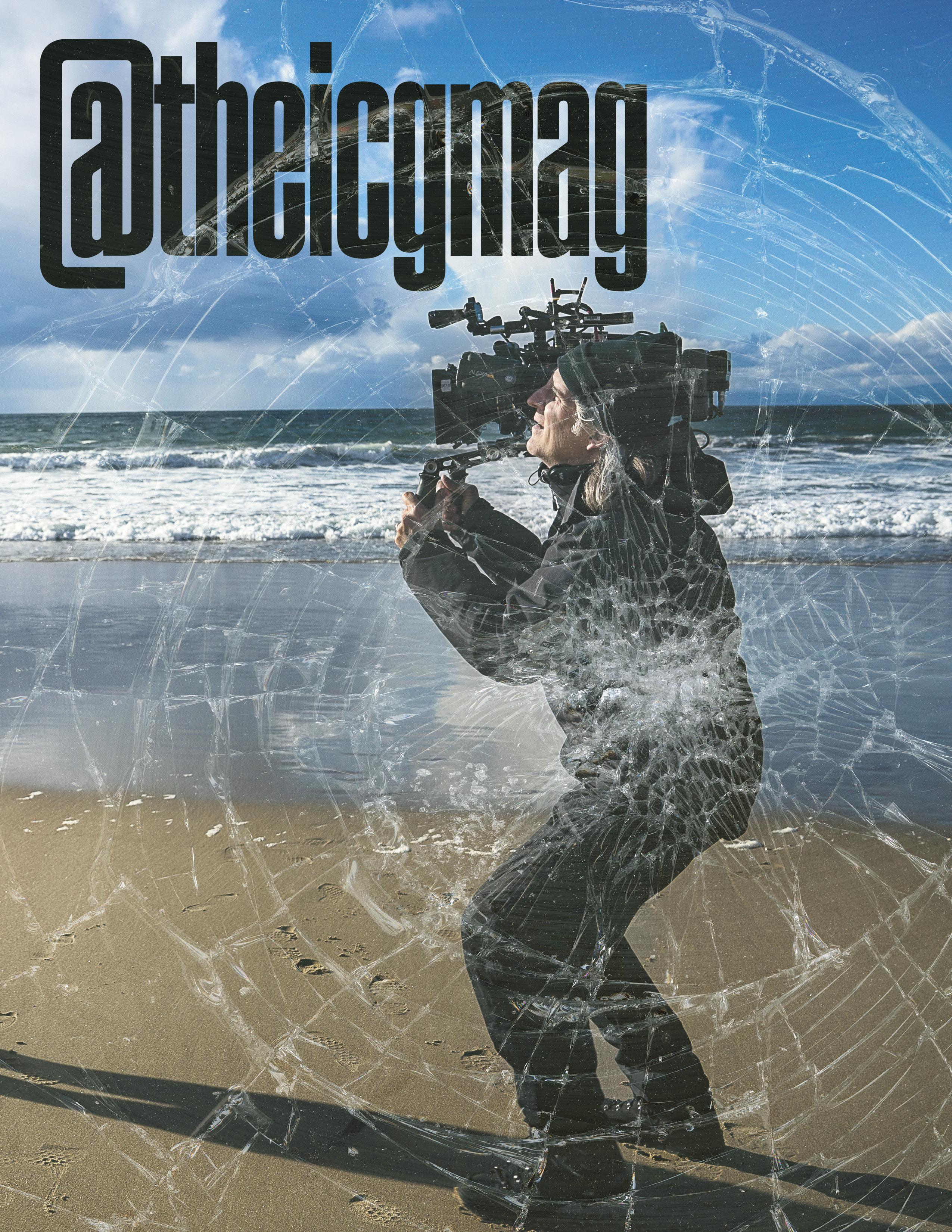
I was excited when I learned we had a sunset scene at the Baldwin Hills location, which plays as Mickey Haller’s house. This expansive view of Los Angeles, which includes Downtown and the mountains, is impressive at any time of day. I had shot unit at the location during the day and at night, but this was my first sunset scene. I stayed close to the set, watching camera placement and movement, and strategizing where I could fit in the cramped deck space. As the sun got lower and the shooting window began to close, the vibe on set was on fire. By the time we started rolling, I had found my spot and went into the zone. Grabbing this shot felt like second nature – bending, leaning, adjusting my camera settings to keep up with the changing light, keeping my awareness on the moving cameras inches away, waiting for the camera on the crane to move in as close as possible to the actor but not too close to block my view of downtown. Within minutes the last of the usable light had faded, the AD announced we were moving on, and I was buzzing with the beauty of it all.

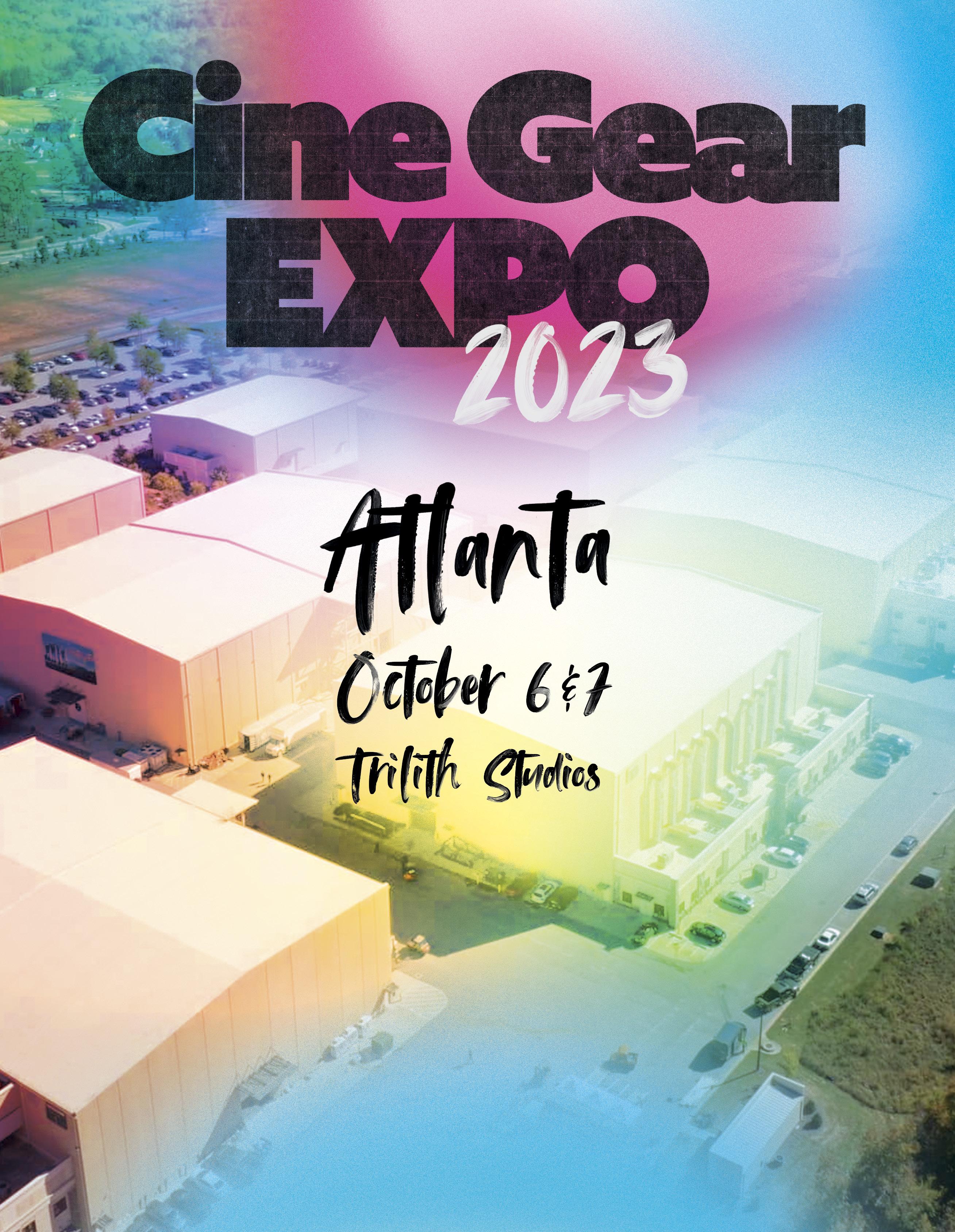
Elevate your show experience. Join today to stay connected with the industry.
October 24–26, 2023
April 13–17, 2024
